Pekka Buttler, July 2025
Introduction

This lens’ data sheet is available here.
While its exact date of manufacture is unclear, it is likely this lens was introduced around 1970.
Its mainline specifications of 35 mm f/1.9 make a fast moderate wide-angle. In fact, there are relatively few 35 mm lenses faster than this, and many of them are discussed in the JAPB comparison of 9 bright 35 mm lenses.
What makes this lens even more interesting is that most fast 35 mm legacy lenses were manufactured by major brands (Minolta, Nikon, Zeiss), and these often cost a hefty penny, one naturally starts wondering whether this Vivitar could (in terms of bang/buck) be a great bargain.
Read on…
Ergonomics
First off, my sample of the Vivitar 35 mm f/1.9 has a Konica AR mount but the lens was available in several other mounts as well, including: Canon FD, Contax/Yashica, Konica AR, M42, Minolta SR, Nikon F, Olympus OM and Pentax K.
In terms of ergonomics, the Konica AR mount is rather straightforward, as one need not dabble with aperture activation rings (Canon FD), error-prone manual/auto aperture switches (M42) or thread mounts (M42). On the other hand, Konica implemented (on its own lenses) an auto-aperture setting that the user can enter accidentally (it’s just one long click beyond f/16), but needs to press a button to be able to exit. This implementation was assiduously copied by third party manufacturers as well.
The Vivitar 35 mm f/1.9 is not a small, light lens. Had it participated in the JAPB comparison of 9 bright 35 mm lenses it would have been the third heaviest (out of 10 lenses), behind only the Canon FD 35/2 (chrome nose) and Nikkor Ai 35/1.4, and at 73 mm in length1, this lens is a full centimetre longer than any of the other lenses in said comparison. In short: for a legacy lens this is a rather big lens, even considering its class.
On the other hand, I’ve never ‘felt’ the lens to be big, heavy of bulky. I know this is a subjective judgment and YMMV, but unless you routinely prefer rangefinder lenses over SLR lenses because of their diminutive form, you are unlikely to be put off by this lens’ size.
At the same time, that size does offer some benefits as the lens has a wide, beautiful focus ring that is broad, grippy and beautifully dampened2. The aperture ring clicks (half-stop clicks) feel poignant, but without offering great resistance (I find it ironic that this Vivitar’s aperture ring works just as I always wished Konica AR aperture rings would have worked). I have shot this lens a decent amount of time (only adapted) and whenever I’ve decided to check what my aperture value is (when I’ve counted the rapid clicks and think I am at a specific aperture, only to decide to nevertheless check it visually) I have invariably been right on target. This is a lens that is comfortable to use no matter the weather and thickness of your gloves.
Setting up the ‘walk’…
Well now. The images in this ‘walk’ are taken on three different occasions within a few weeks of each other. While this defies the original purpose of a ‘walk’ I’ve found that I rarely find enough time to take all the requisite pictures in one go. Hence, arguably, combining imagery from several outings can improve the quality and representativeness of the imagery.
All the images in this walk-around have been taken between the 18th of June and the 7th of July. The first images hail from the Helsinki city centre, the mid part from a vacation on the southernmost shoreline of Estonia and the last part from an overcast and drizzly day in a Helsinki park.
Images and commentary
I did this walk-around using my Sony ⍺7R2 and a Fotga3 Konica AR to Sony FE (NEX) adapter
As with all large-aperture lenses, the Vivitar 35 mm f/1.9 is soft wide open. While there is some spherical aberration, longitudinal chromatic aberrations (the traditional bane of large aperture lenses) are surprisingly mild. For reference see the collage below.
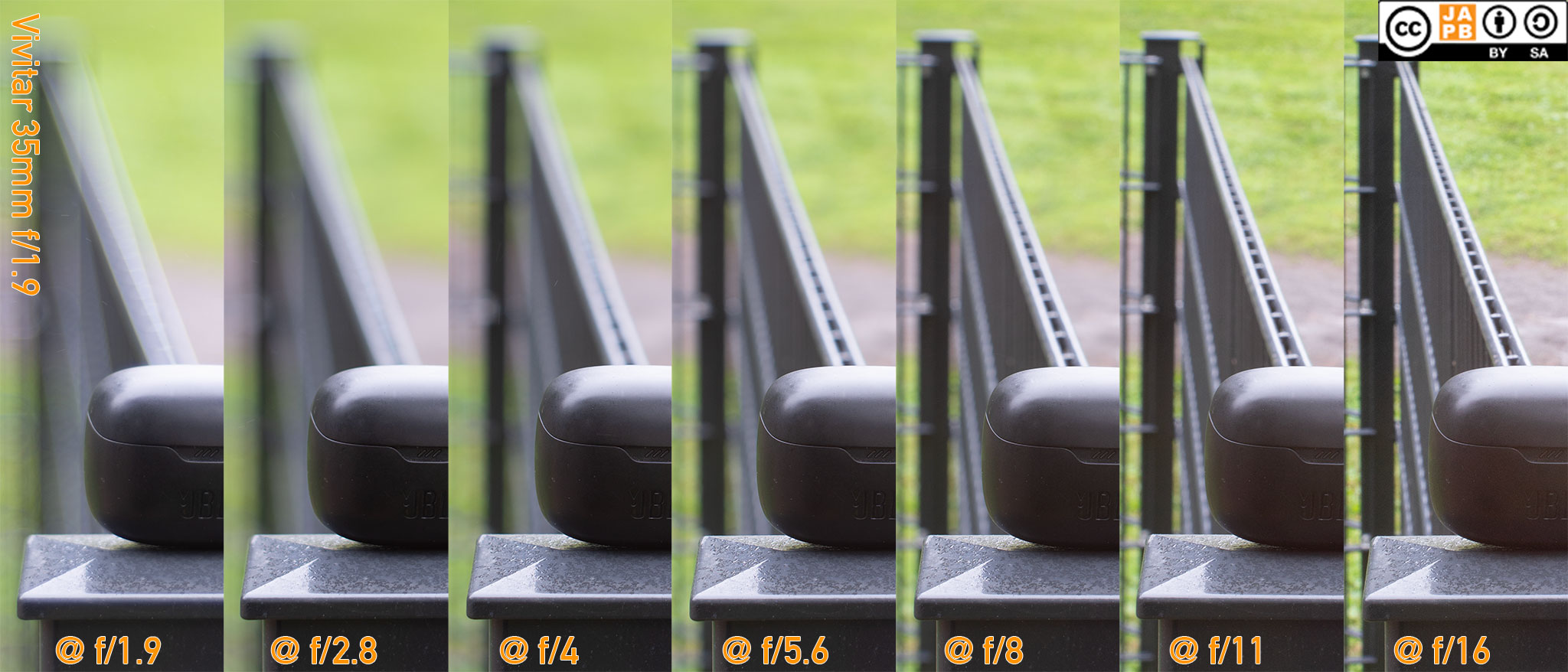
(Open image in new tab for larger version)
For a 1:1 version, see here (warning: ≈3 megabytes)
On close inspection, the wide-open softness in the Vivitar 35 mm f/1.9 shots is due to a rather balanced combination loss of definition and loss of contrast (please see the JAPB article on sharpness and how it has two components: definition and contrast). Why is this distinction important? In short because contrast can be easily boosted in post-production (your image editor’s dehaze function is key here) , whereas the same does not apply to definition.
The Vivitar 35 mm f/1.9 does have significant vignetting wide open (f/1.9). From there it improves gradually until by f/4 the issue is no longer field-relevant.

(Open image in new tab for larger version)
The collage below shows how longitudinal chromatic aberrations are not really a huge problem with the Vivitar 35 mm f/1.9.
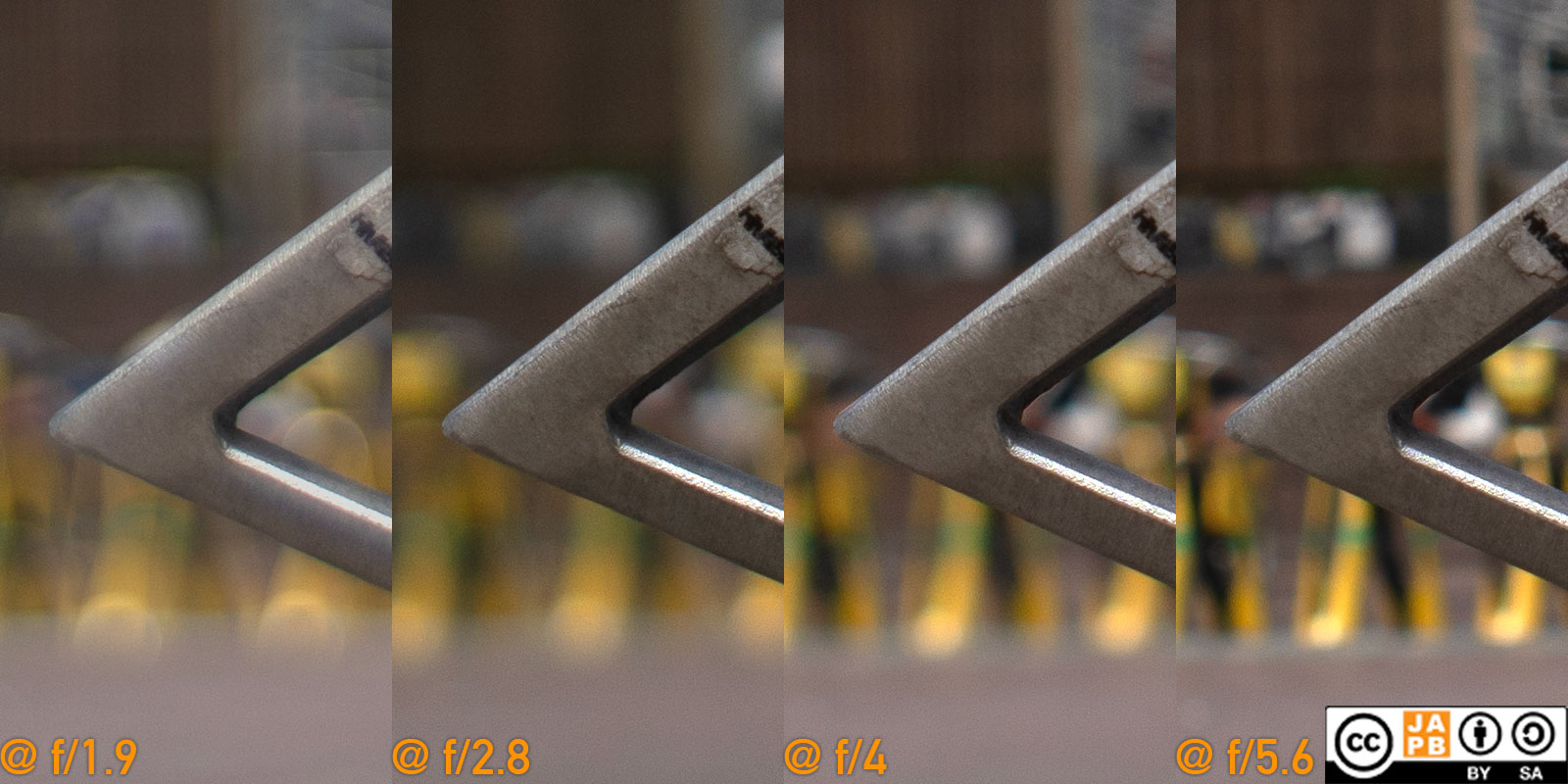
The Vivitar 35 mm f/1.9 lens does however have an issue with field curvature. Specifically, the lens’ plane of focus curves outward towards the edges, and does so more than a little. See below image for illustration.
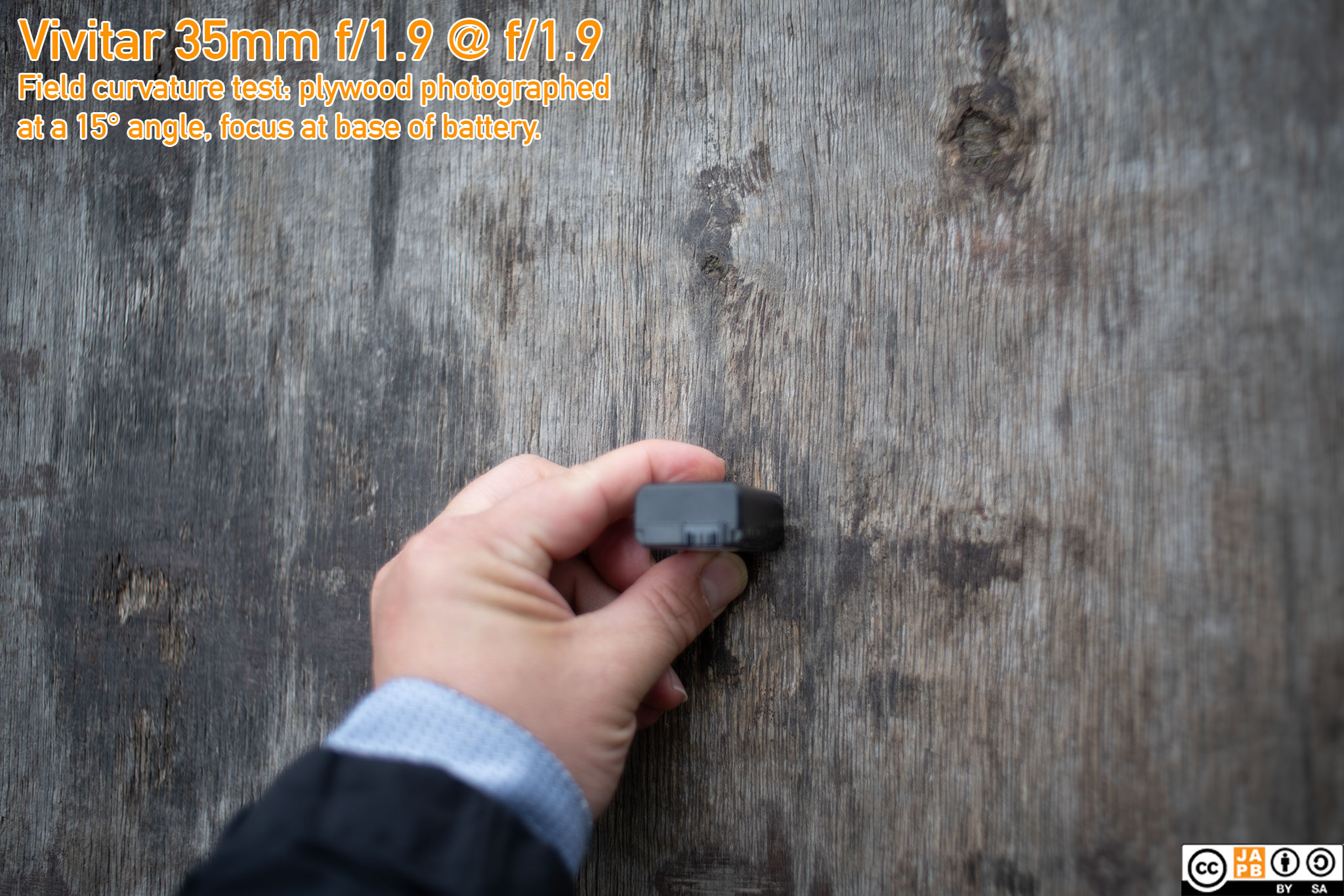
You can see the extent of the field curvature in that the area on the left of the battery (farther away from the focus point) is rather well defined and certainly very much more sharp than the area to the right of the battery (closer than the focus point).
To ascertain the severity of field curvature one needs to take a series of photos at smaller and smaller apertures and see if the increasing depth of field will at some point manage to negate the effect of the field curvature (make the corners sharp).
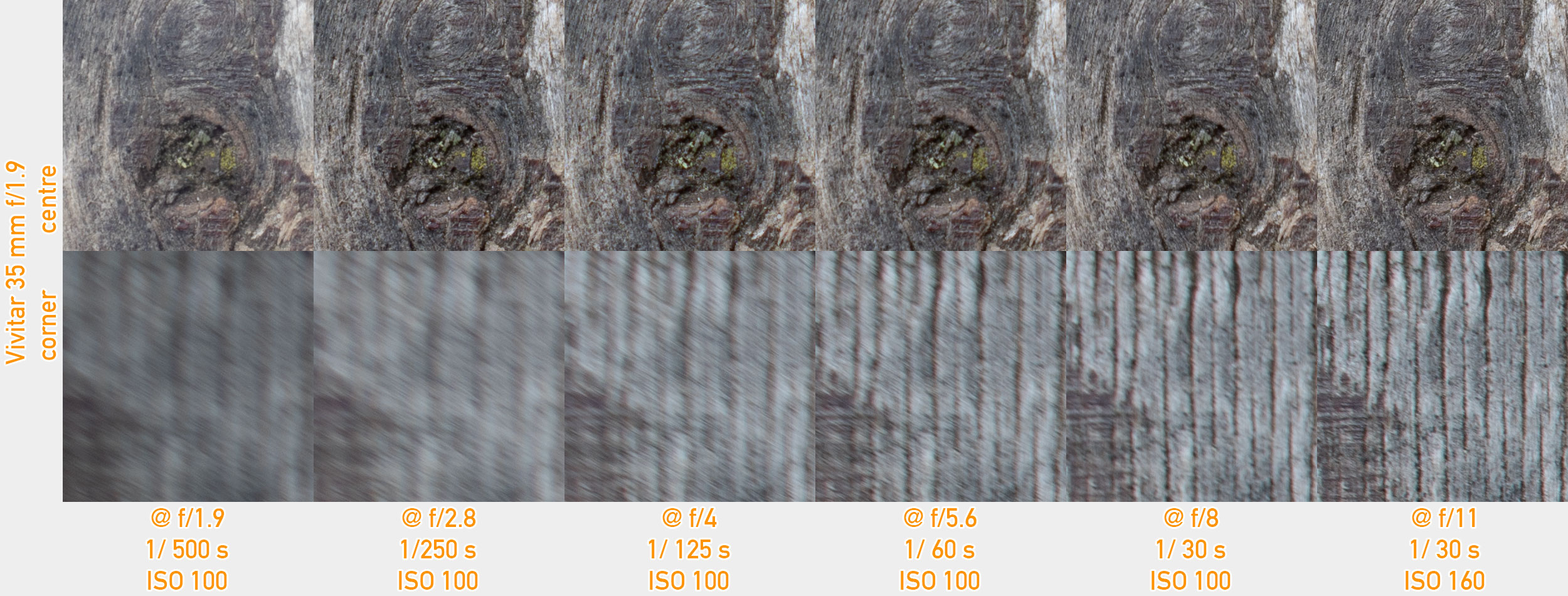
As is evident from the illustration above, the field curvature is of sufficient severity to barely be addressed by stopping down. You should therefore not use this lens for photographing newspapers hanging on walls (or any other flat objects).
Due to the rather strong level of field curvature, it becomes at times hard to distinguish whether corner area artefacts (see below) are due to lateral chromatic aberrations, or an interaction between field curvature and (e.g.) astigmatism.
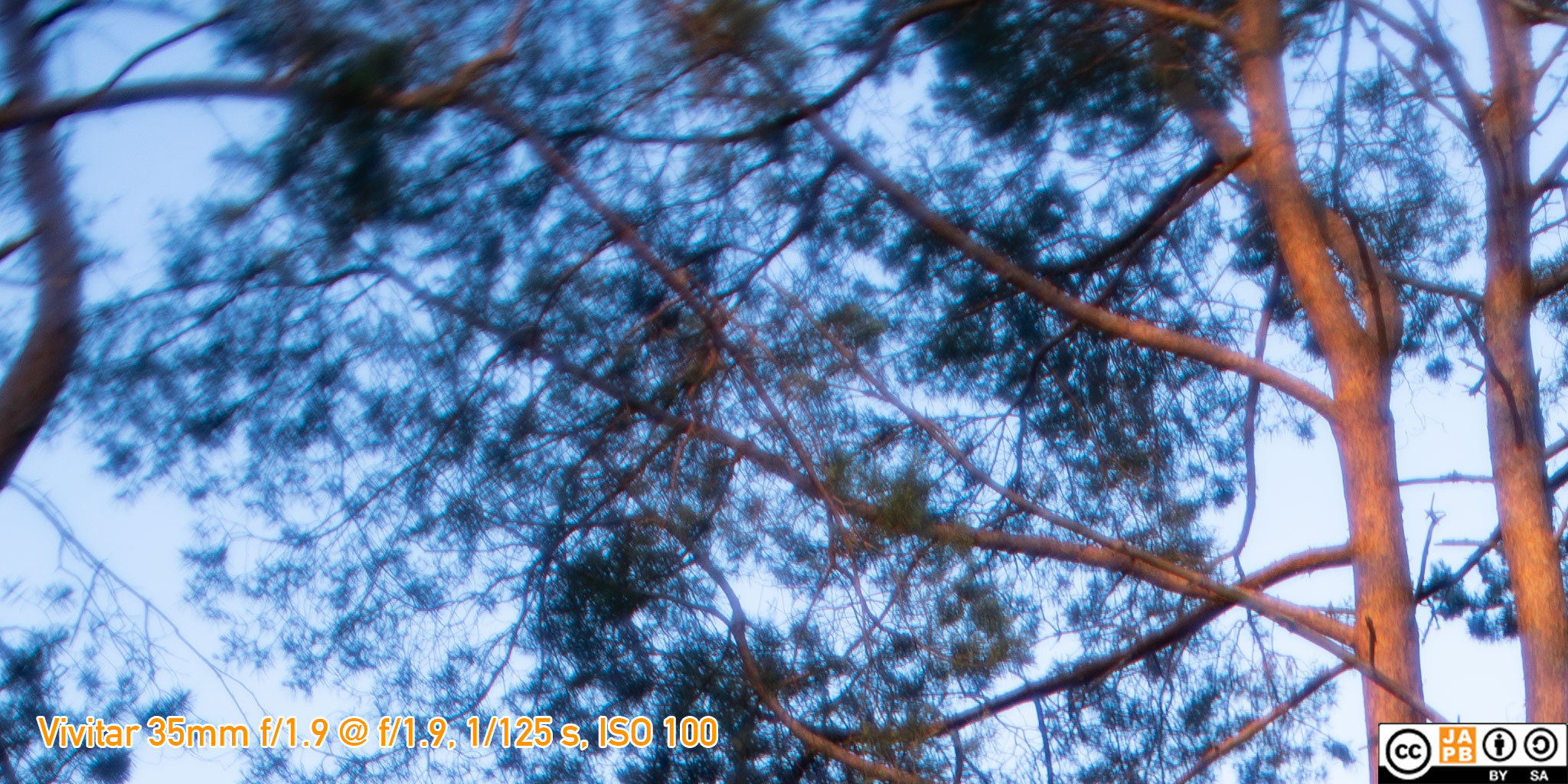
Considering the lens’ age, and that Komine likely did not have access to the same coating technology as Canon Nikon or Pentax did, one would not expect this lens to be a stellar performer in terms of flare-resistance. Here, however, this Vivitar/Komine lens pulls an ace from its sleeve, as the lens is quite flare-resistant (especially for a legacy lens). I had to dig far beyond this walk-around (I’ve had this lens for some time) to find examples of any type of veiling flare or ghosting.
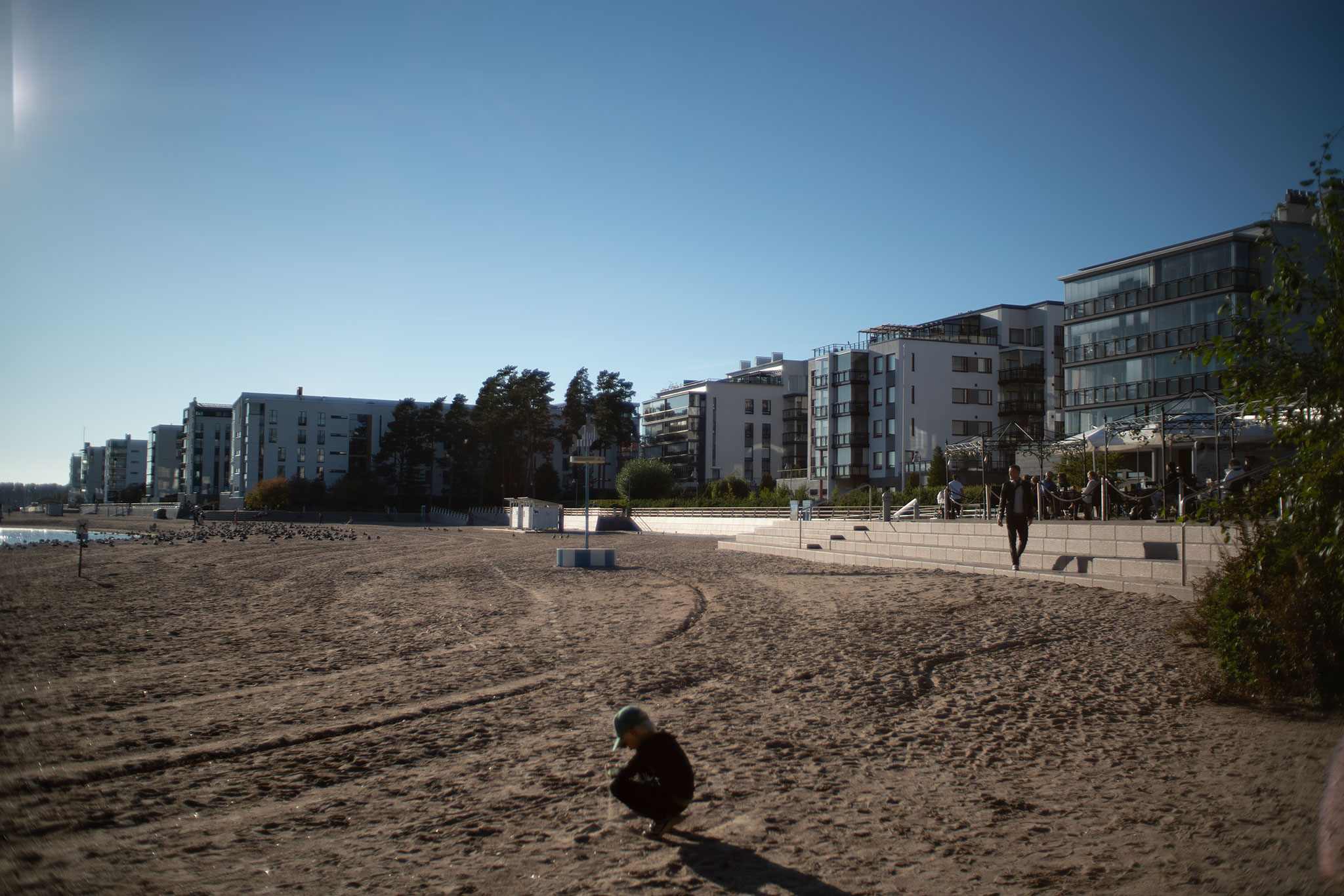
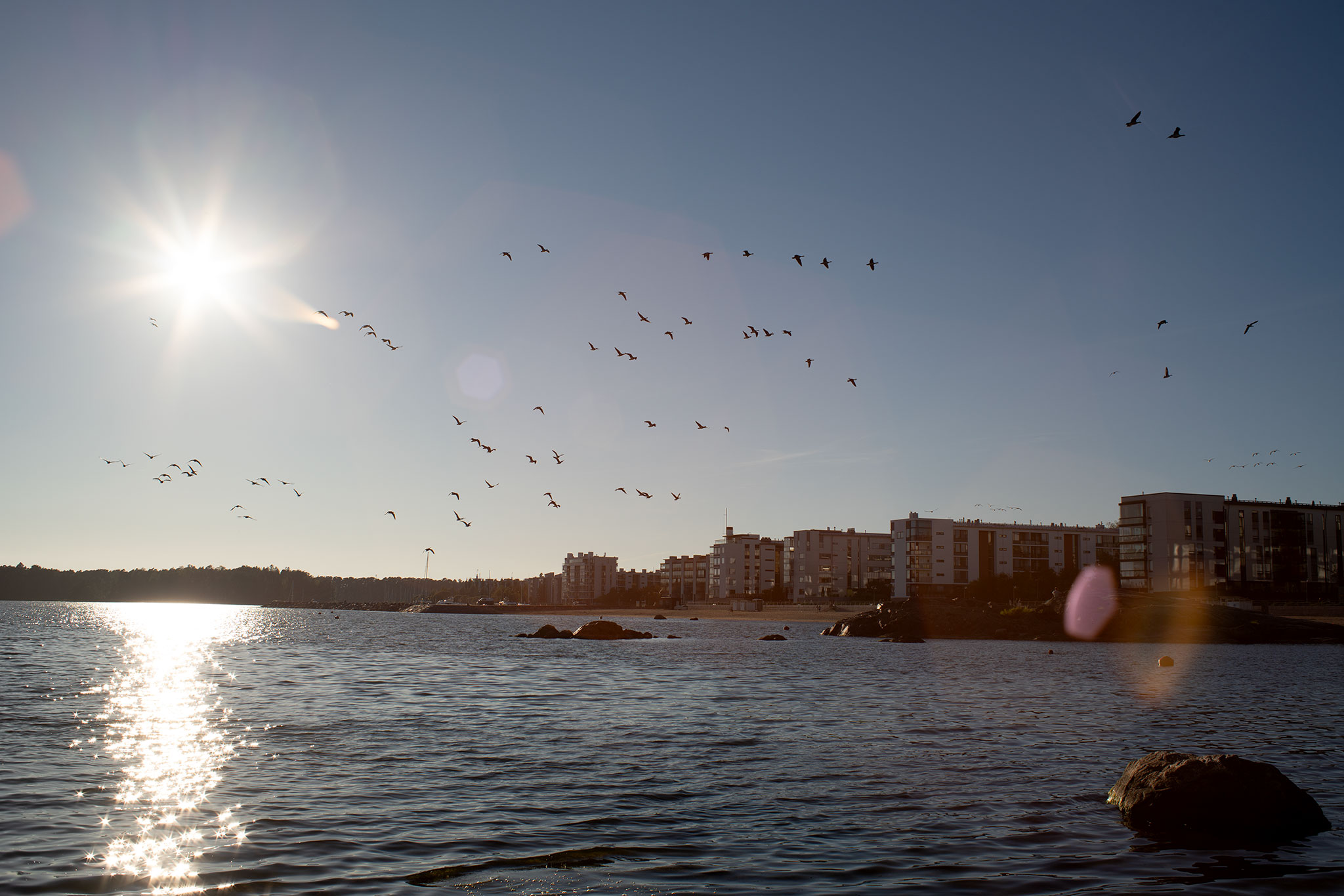
Having a 6-bladed aperture, you can expect some 6-pointed sunstars from f/5.6 onward.
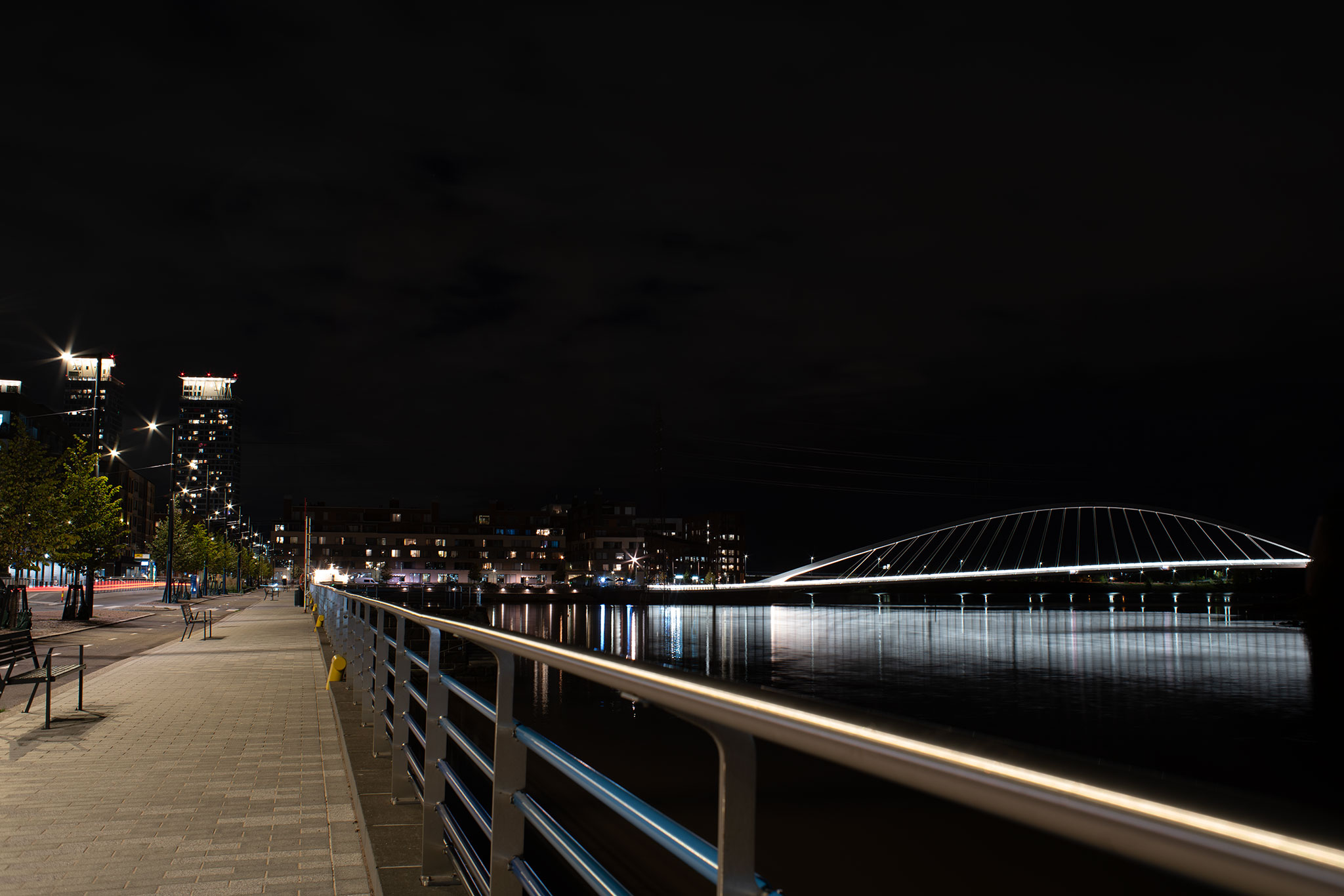
Being a moderate wide angle lens, you would not expect significant geometric distortions and in this the lens does not surprise. There is some barrel distortion, but it is neither significant nor difficult to address.
With an MFD of 0,3 m this lens is not a macro lens. However an MFD of 30 centimetres for a 35 mm focal length lens is very much par for the course and allows for a decent range of use-cases.
The lens’ colour balance is relatively neutral, maybe with a mild propensity to like golden hours and autumn leaves.
Bokeh is notoriously subjective, so the best I can say is that I generally find the Bokeh to not be excessively irritating.
I have not yet taken any shots of starlit skies, so I cannot comment with any certainty on comatic aberration or astigmatism but I might report back.
All in all, if you want a fast moderate wide angle and are being being offered this lens… If sharp corners are crucial for you, you likely should reconsider. Otherwise I find myself very much liking this lens, the experience of using it as well as the image quality it produces.
Gallery shots
All images below shot between 18th of June and the 7th of July 2025. All shots were taken with a Sony ⍺7R2.
Minimum edit in post (unless specifically stated otherwise: ACR default conversion from RAW, straighten, resize to 2048 and JPEG 9) 4.
Feel free to click on images to see larger versions. All images ISO 100 unless stated otherwise.
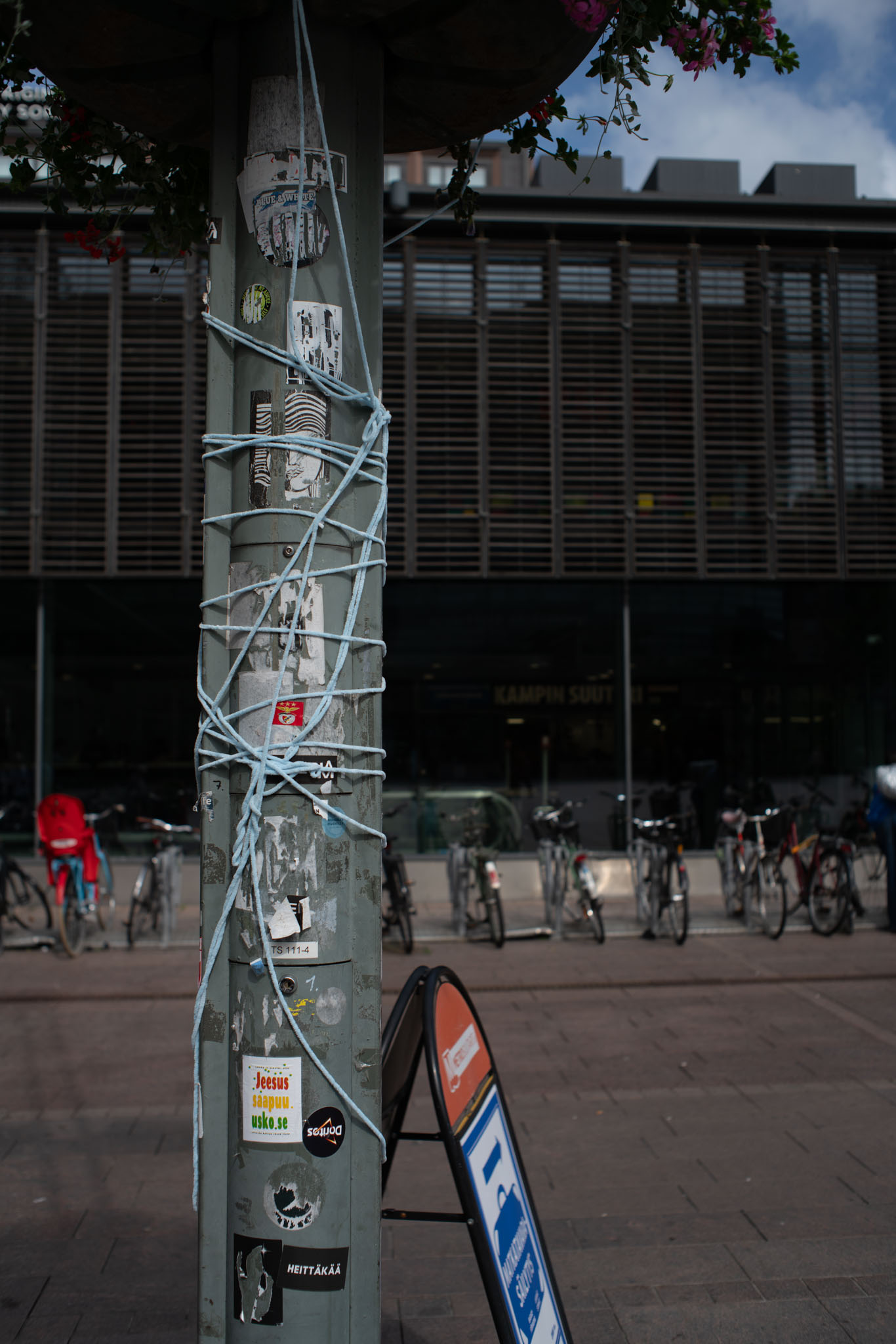
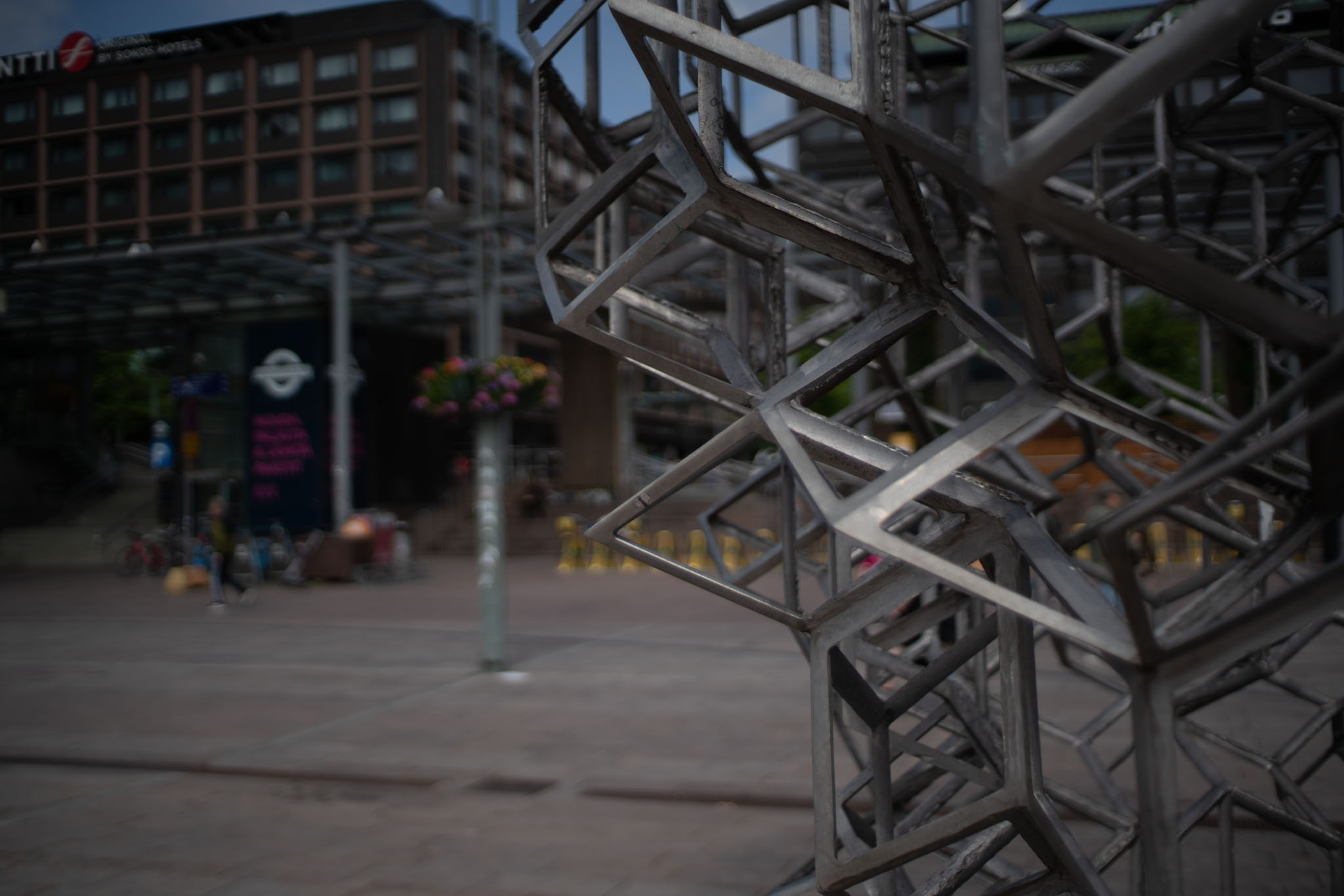
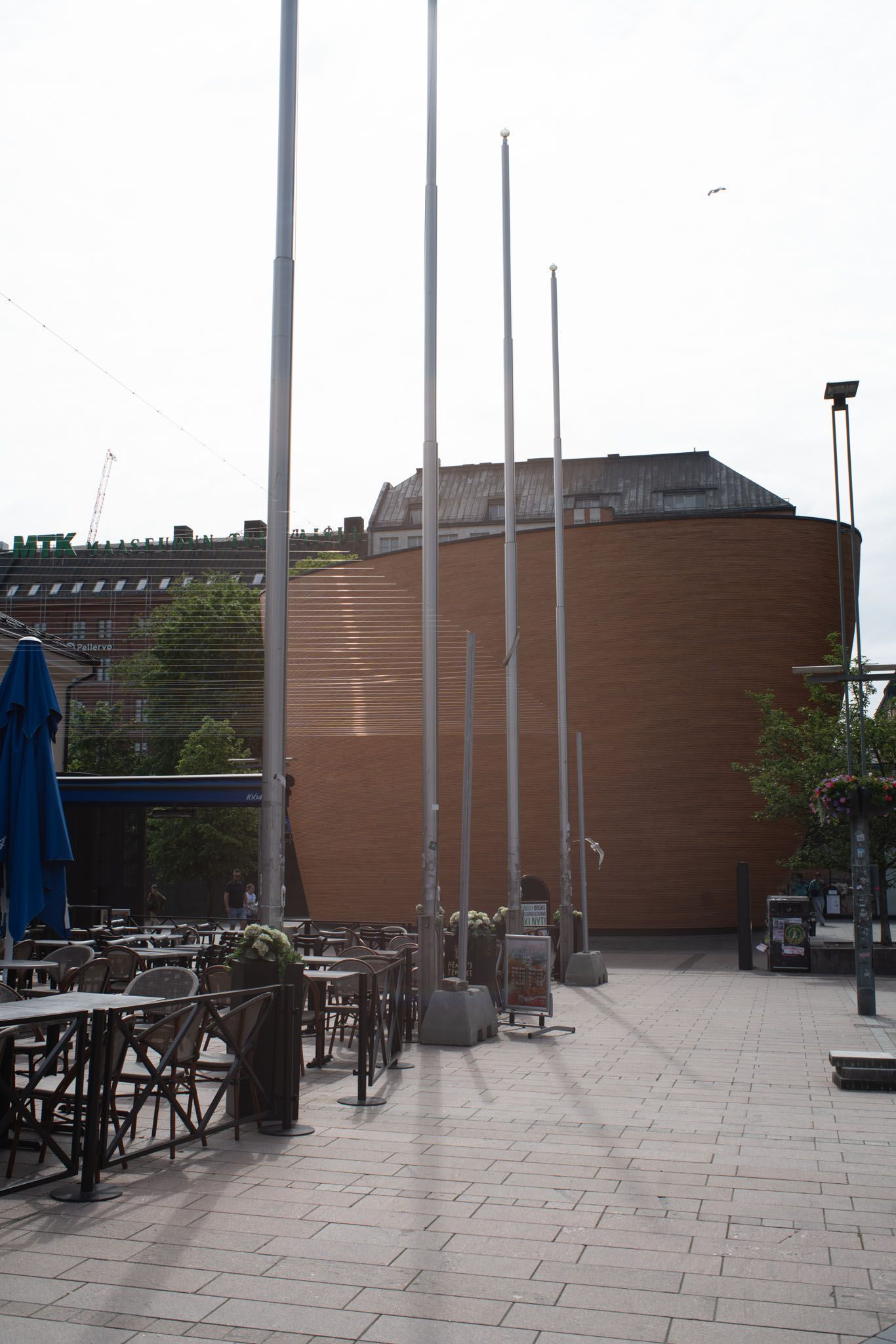
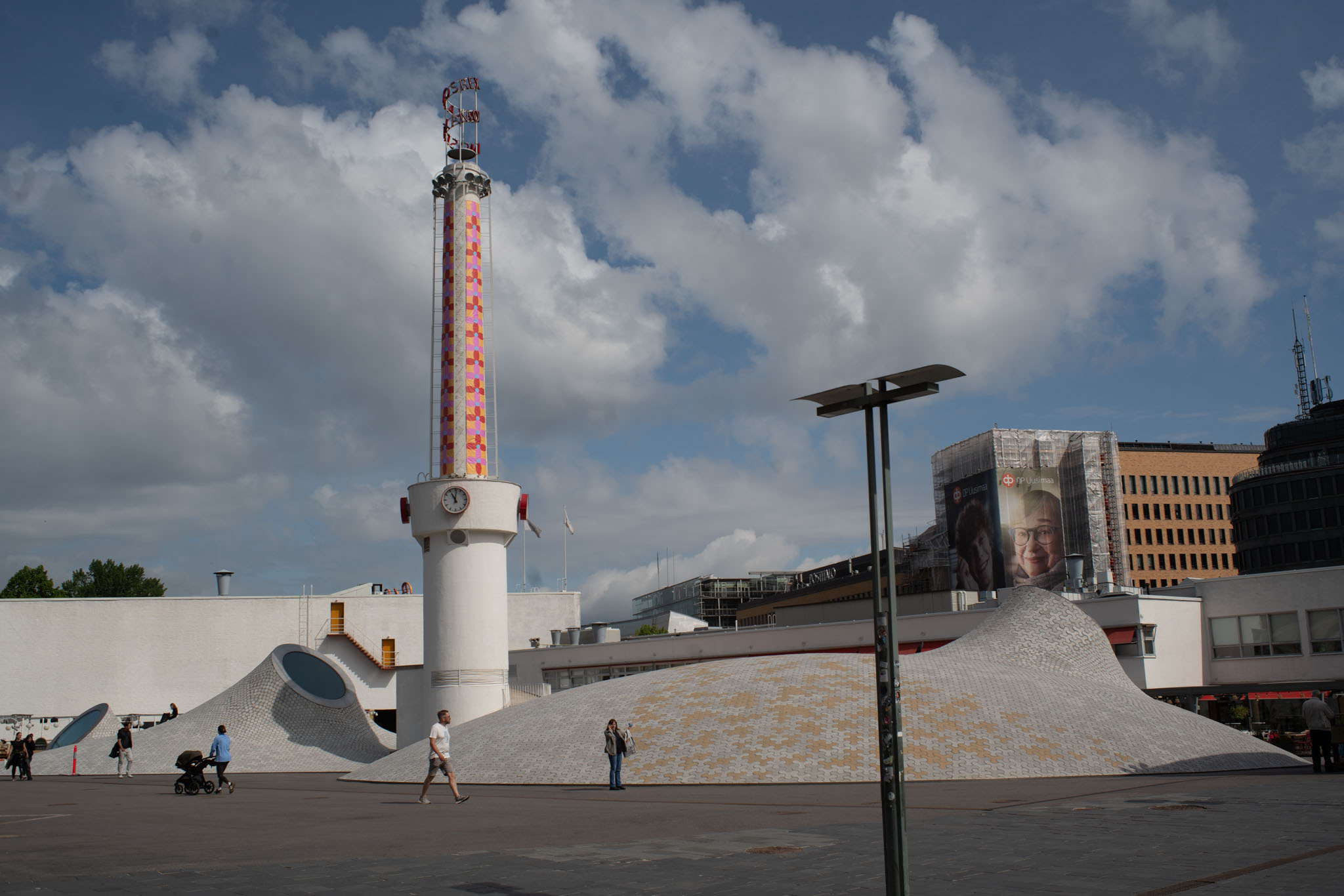
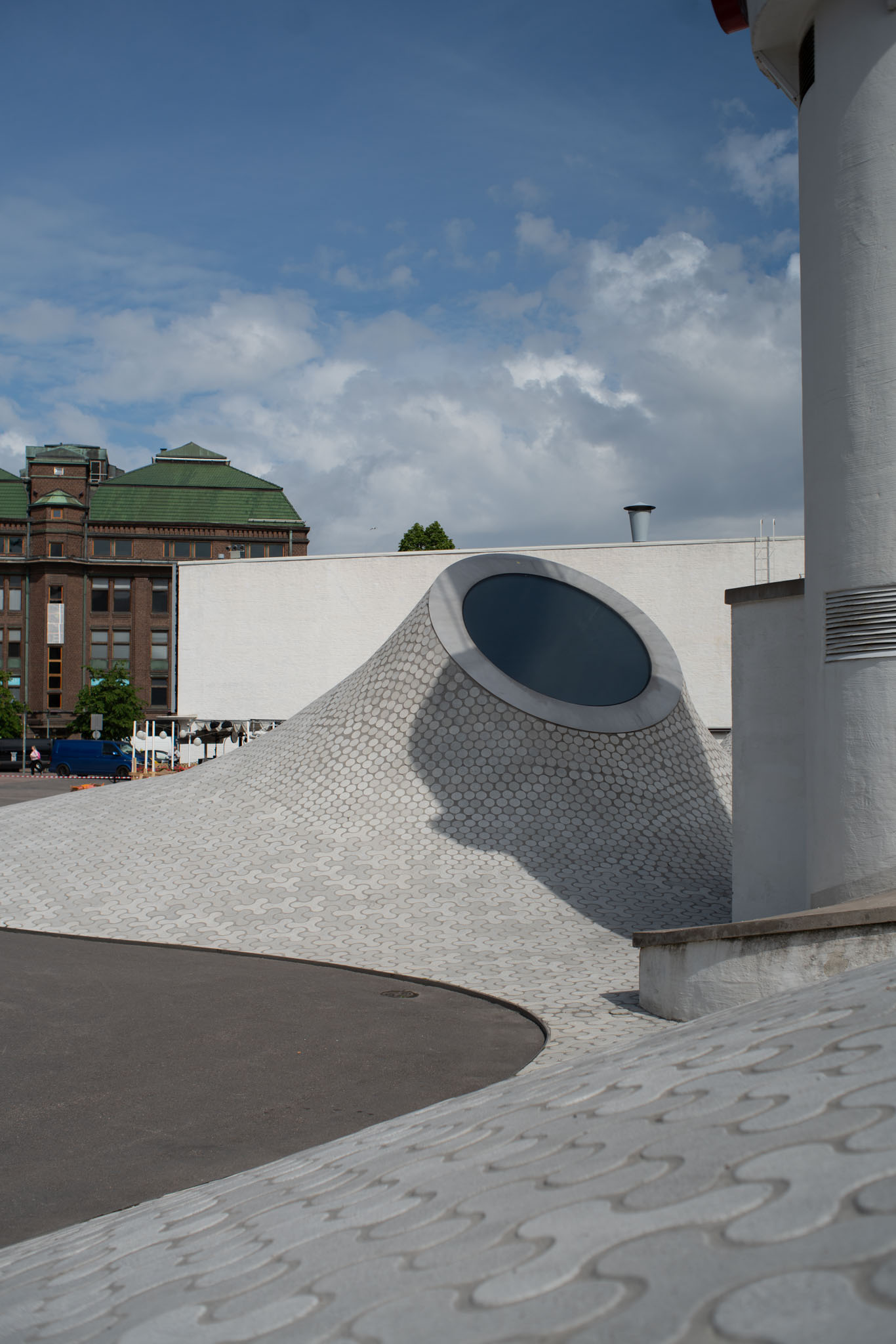
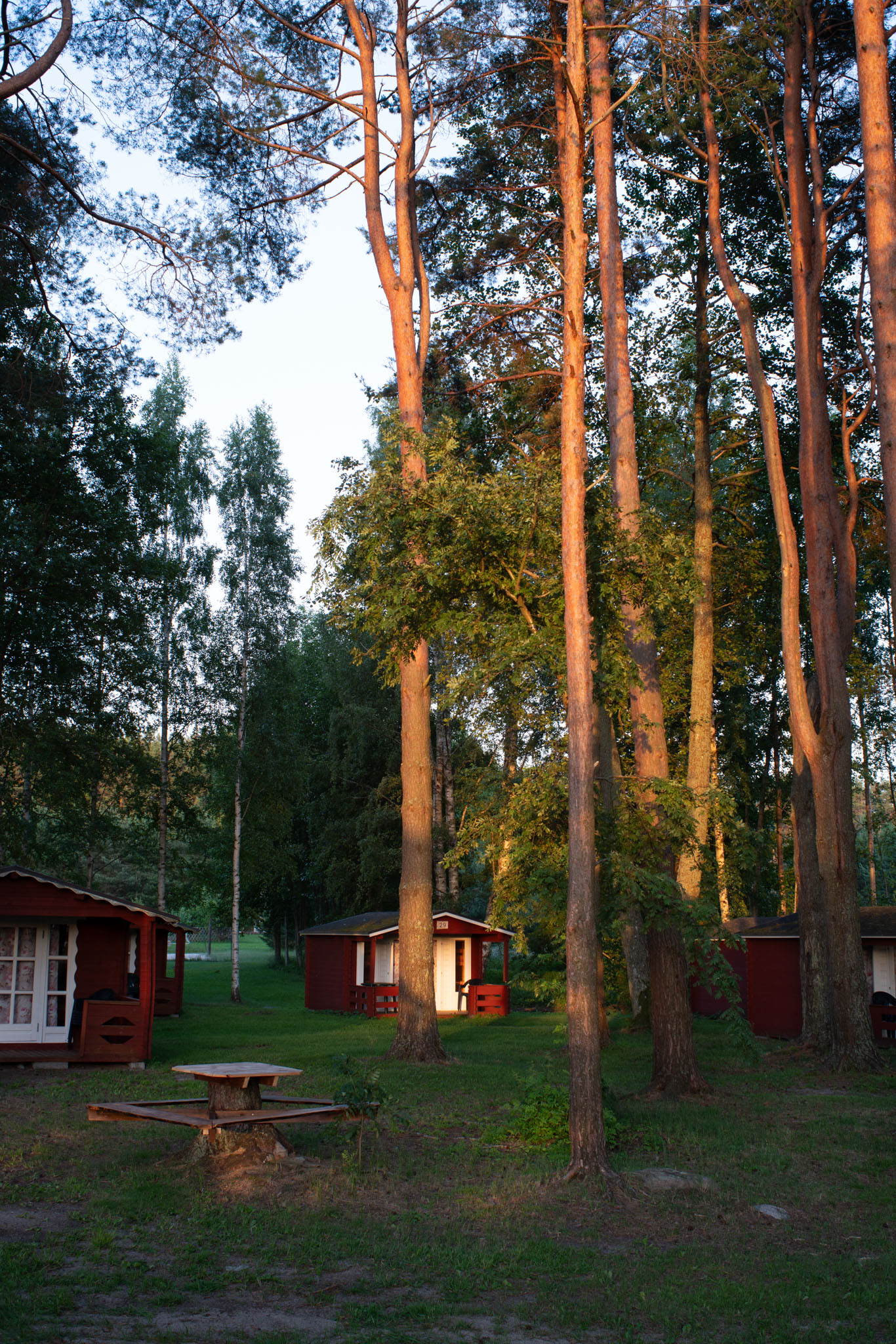
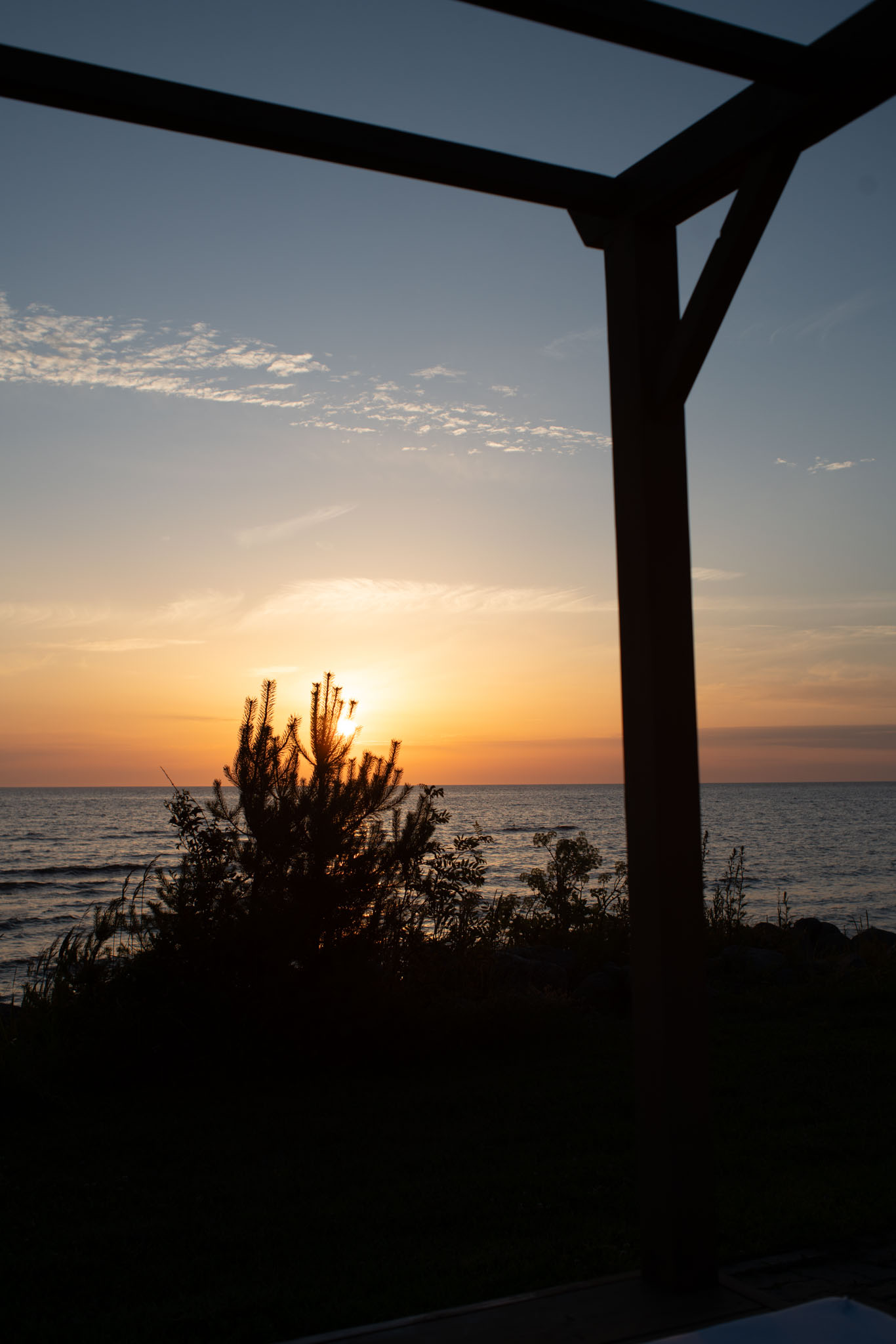

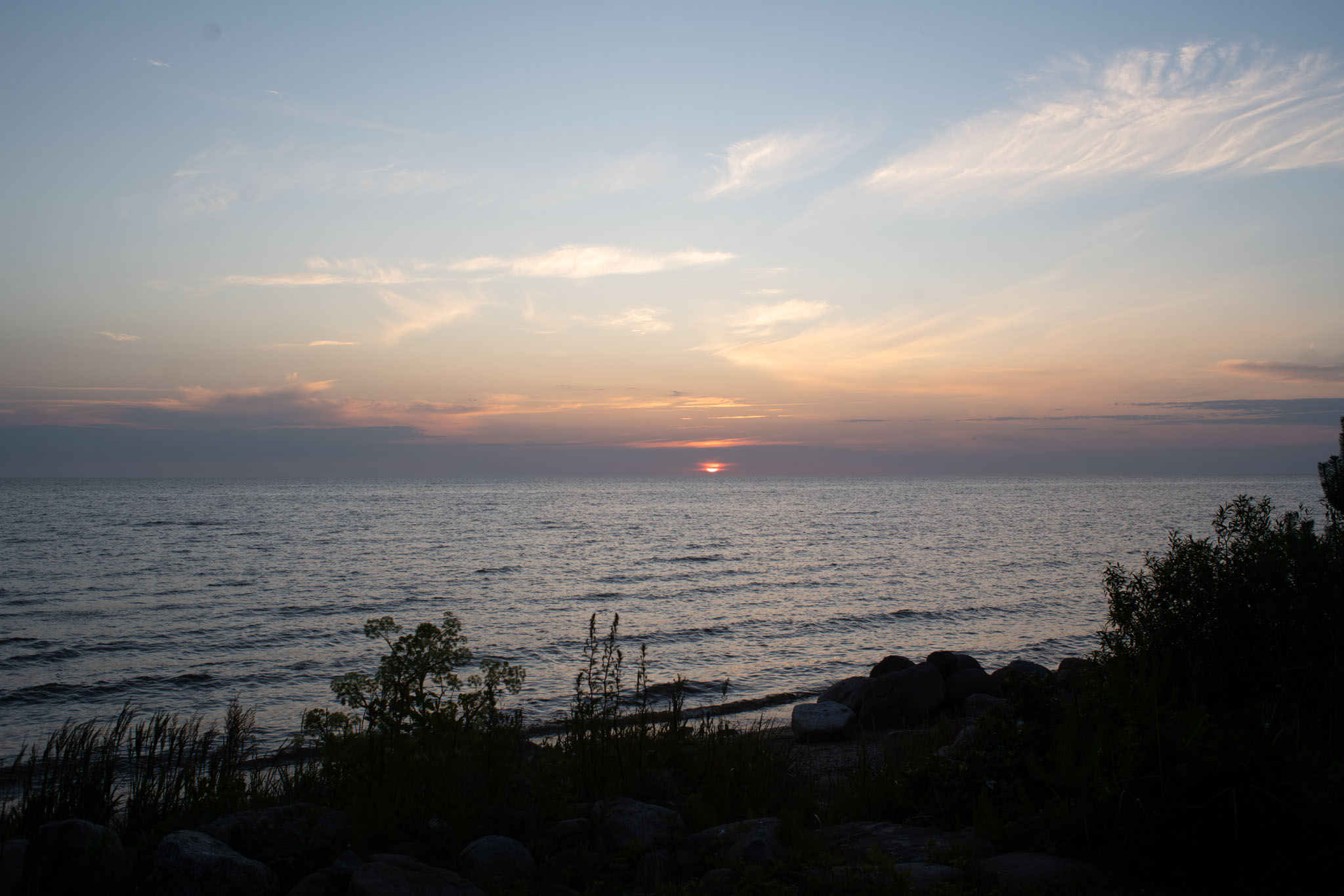
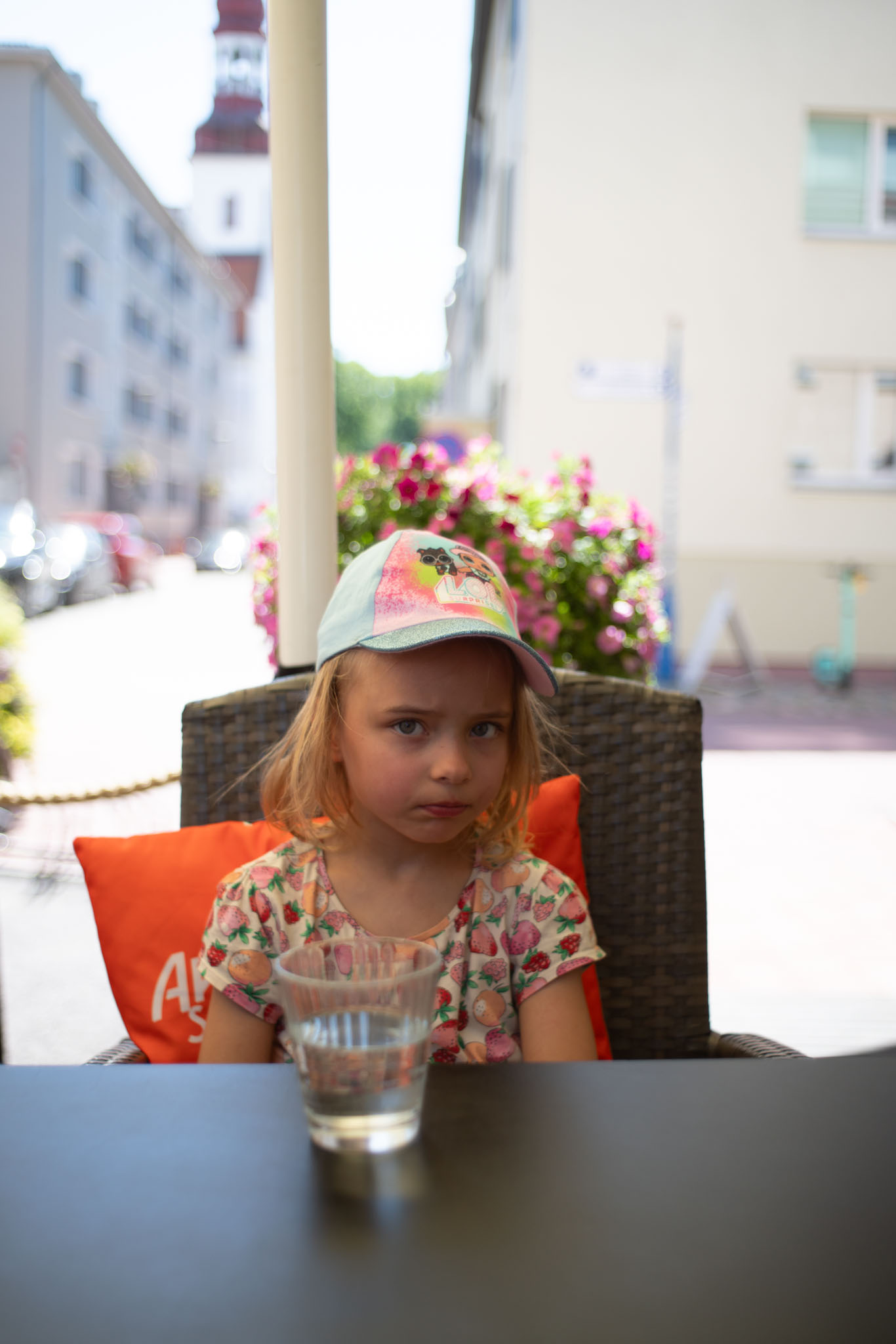
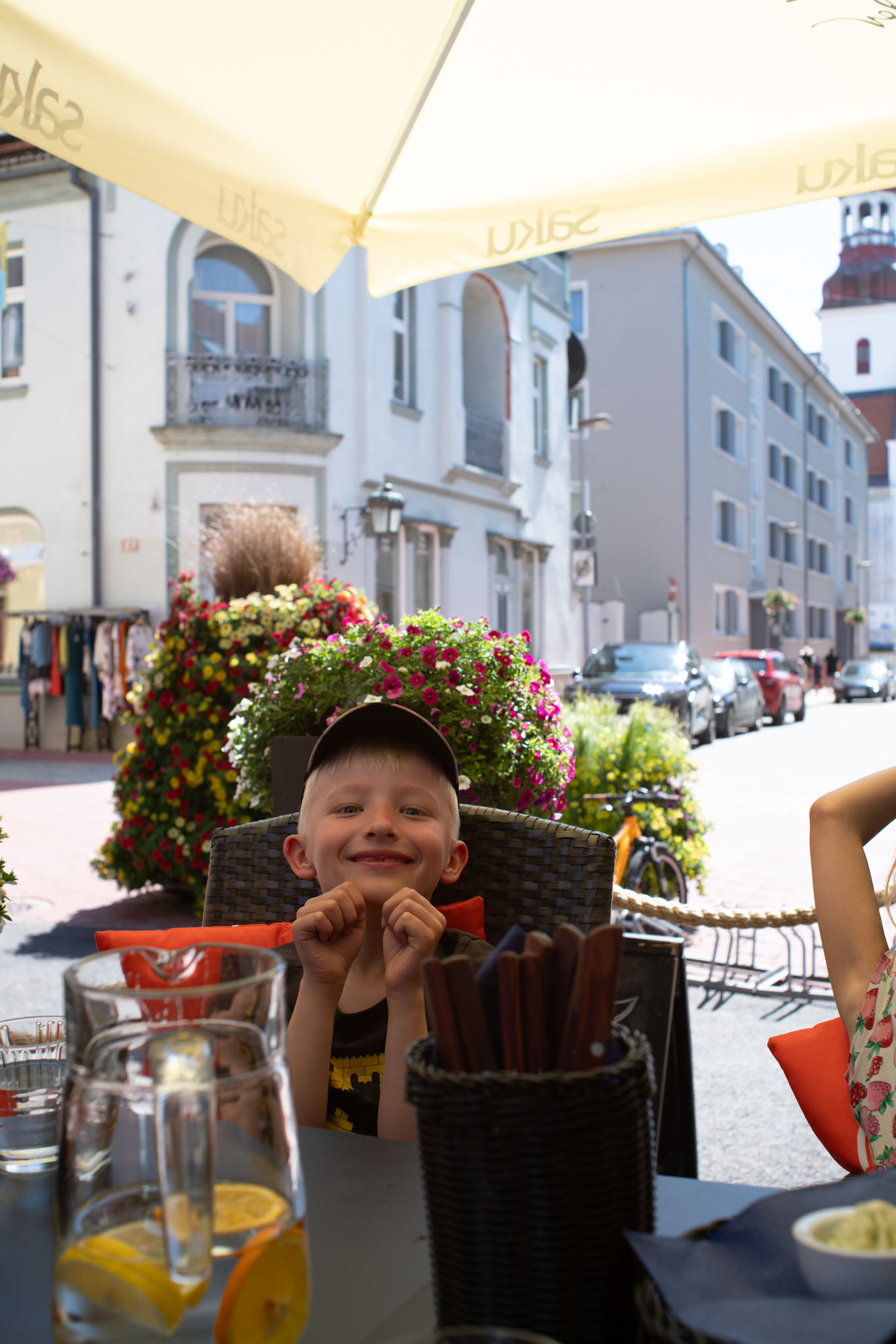

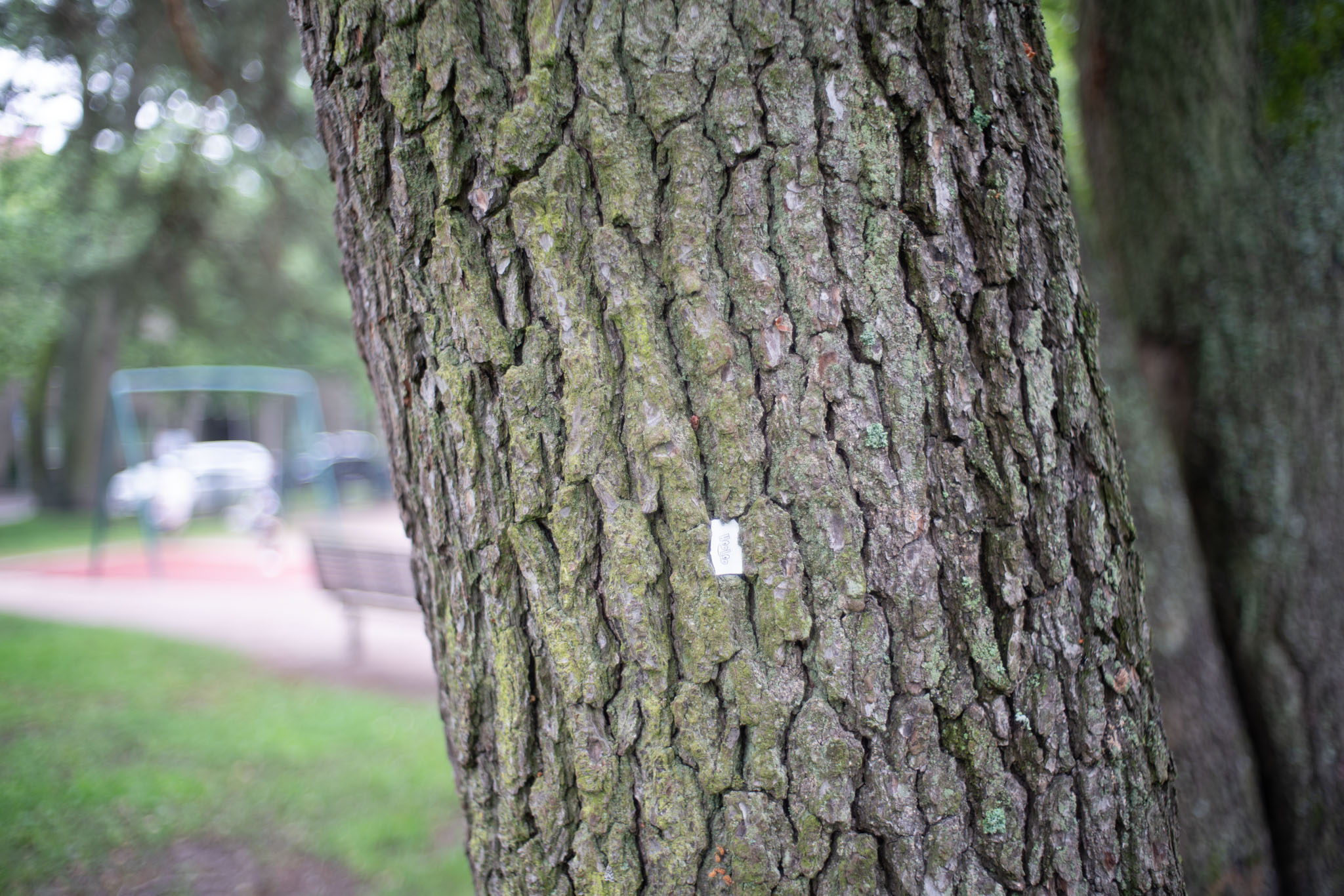
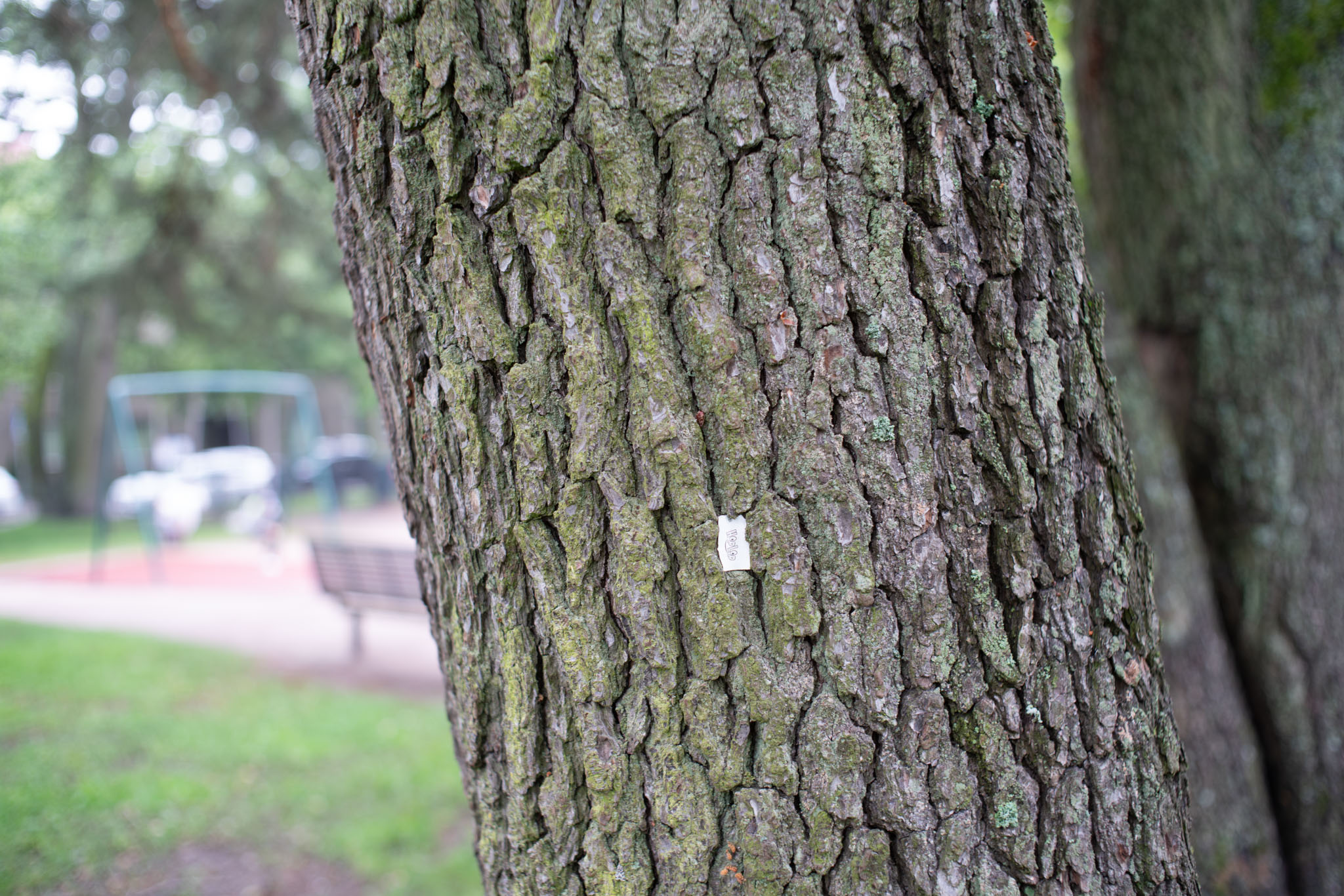
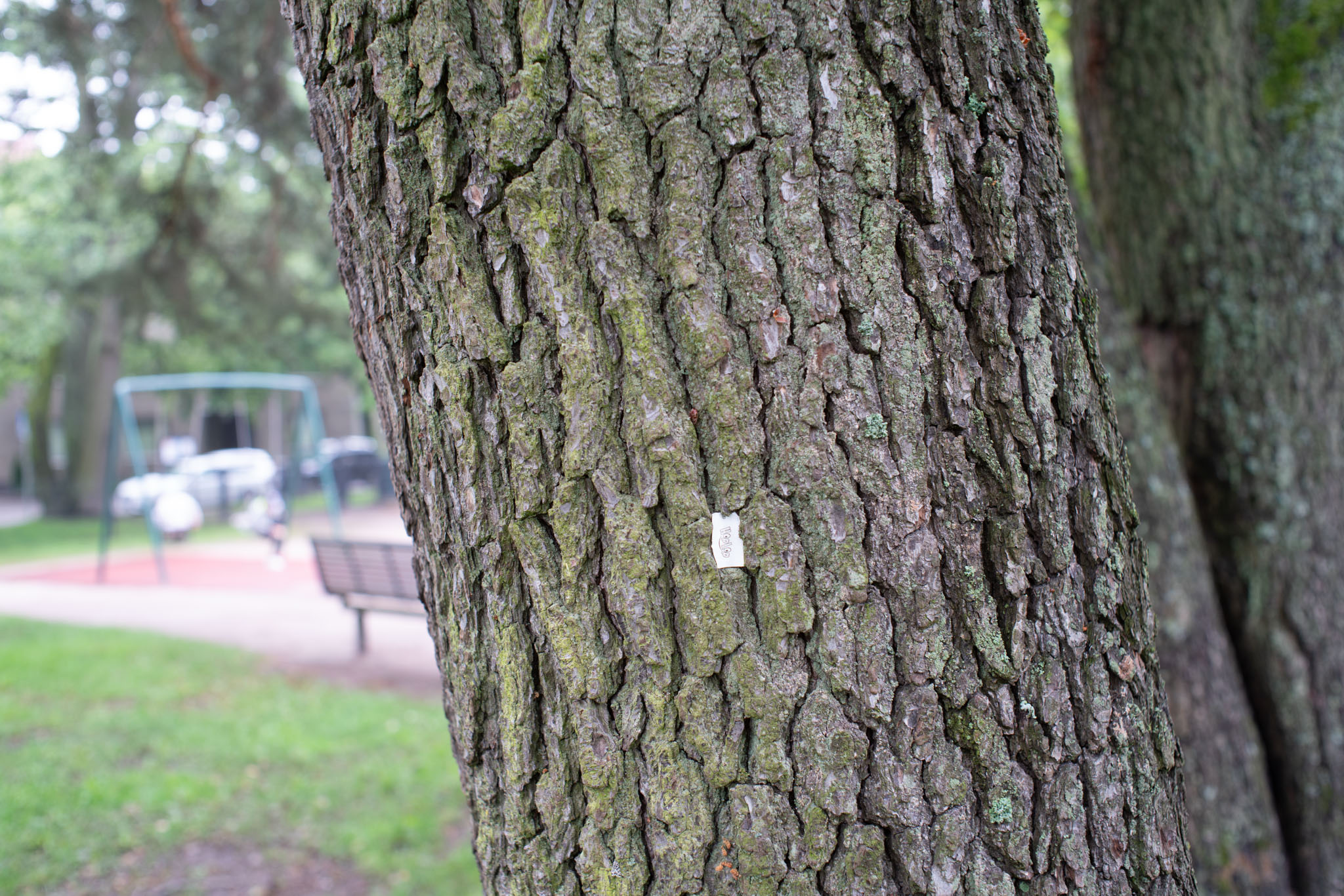

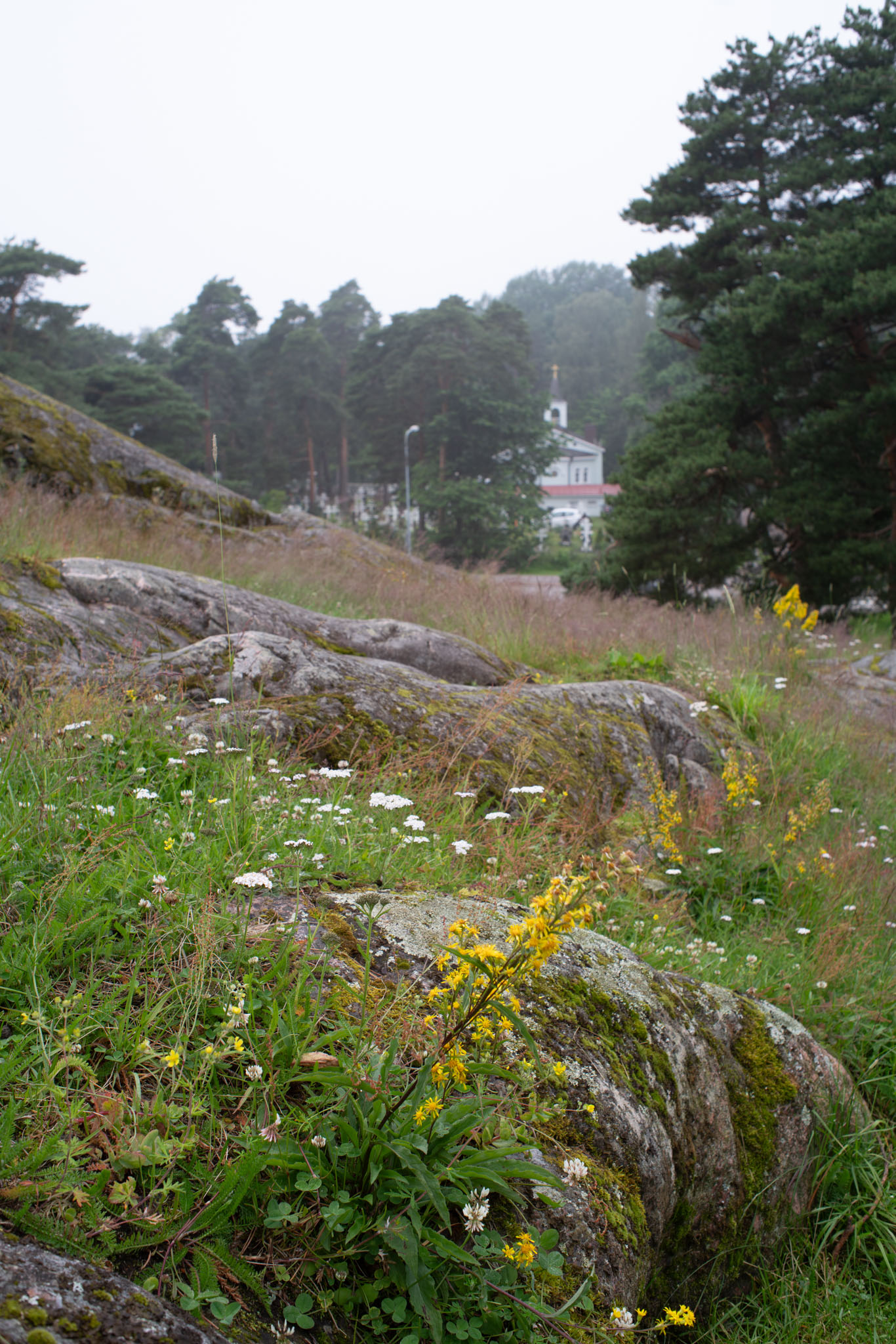
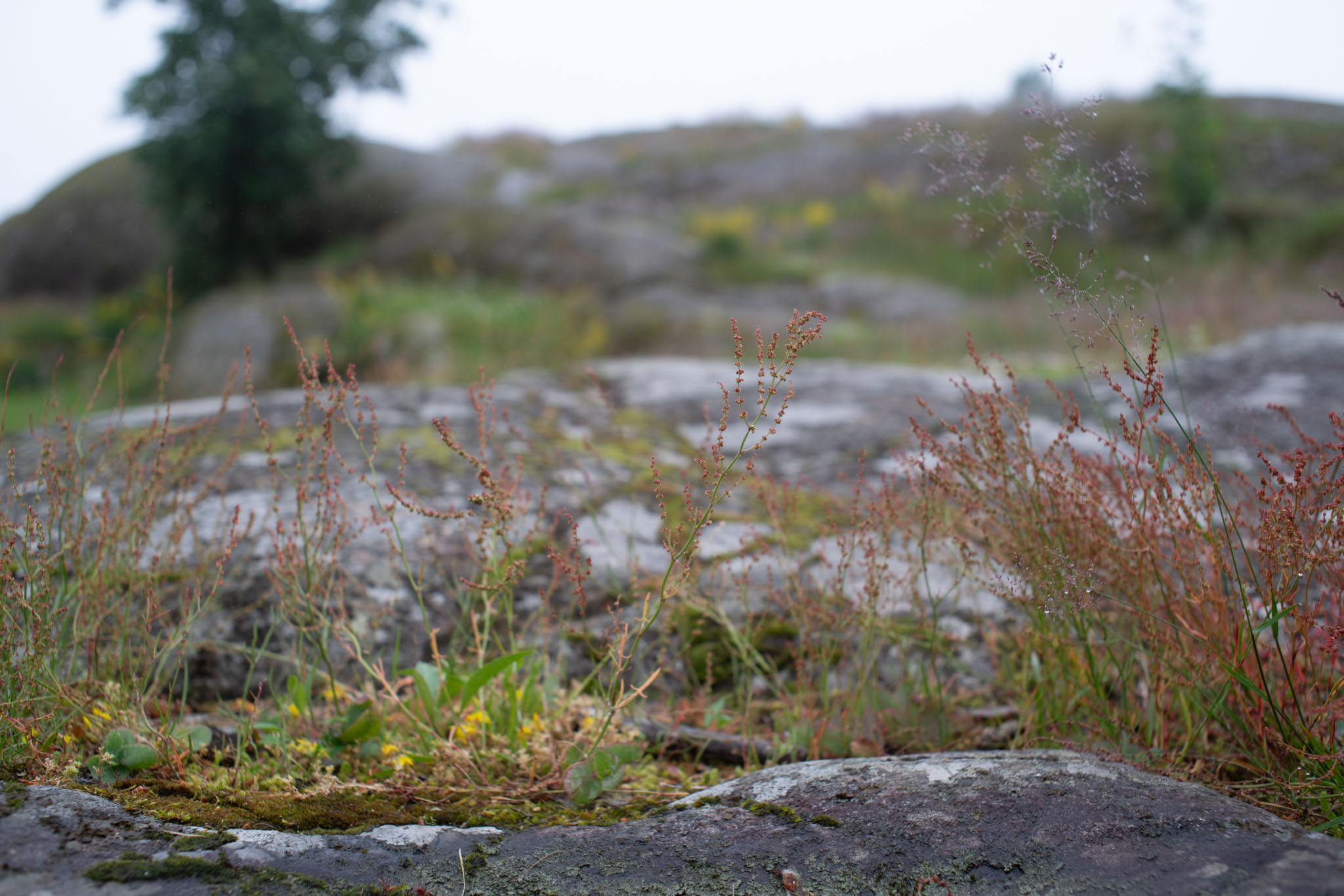
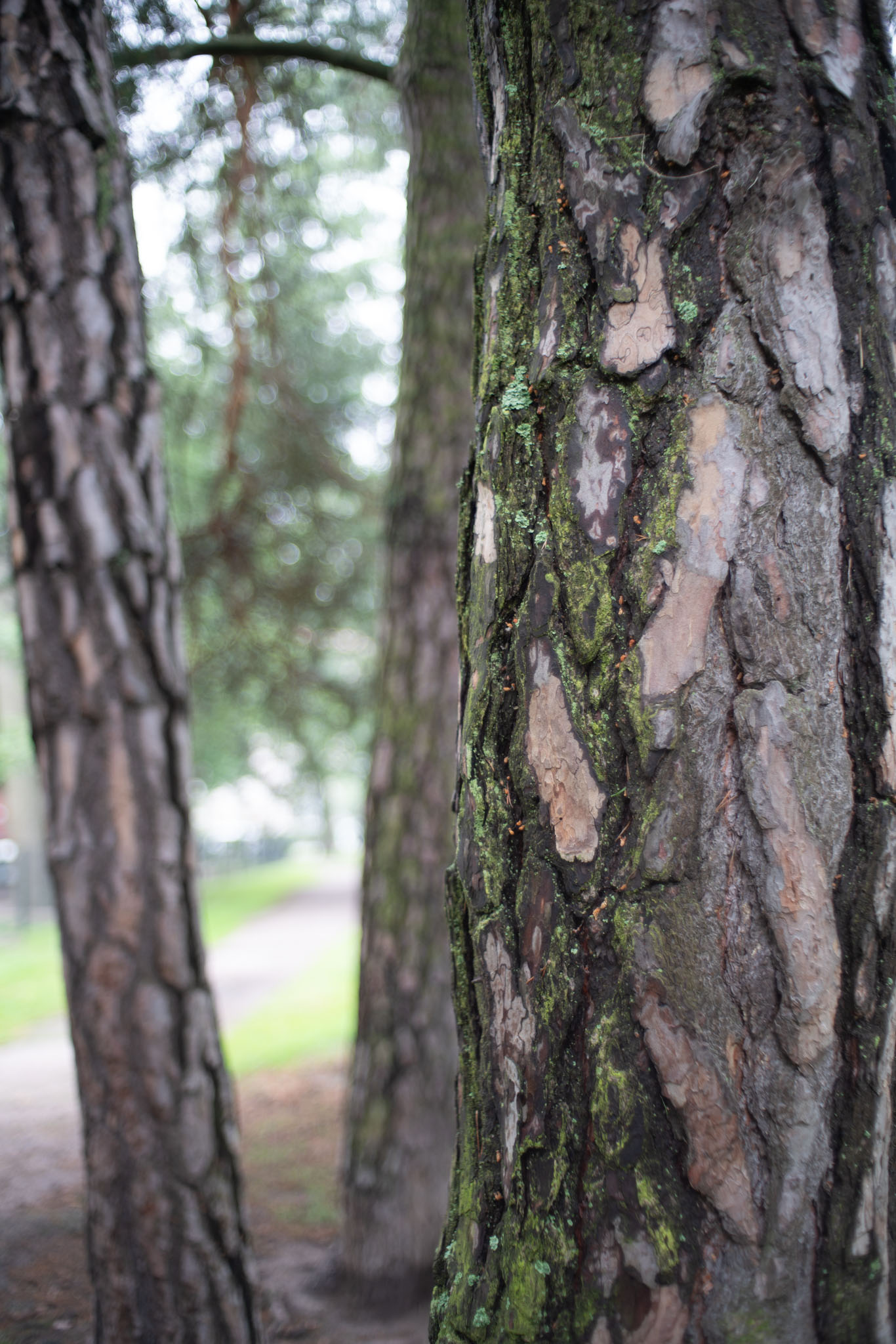
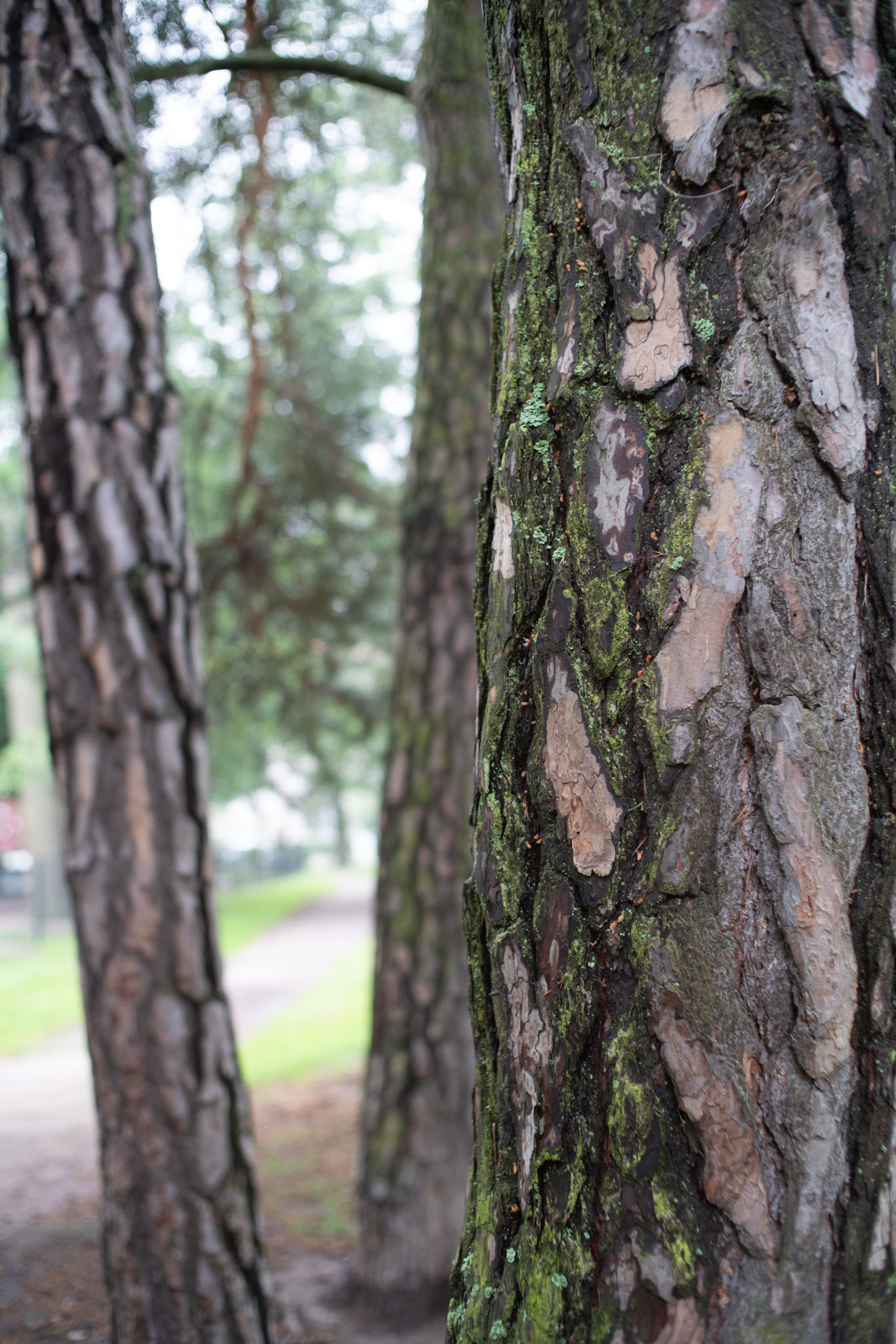
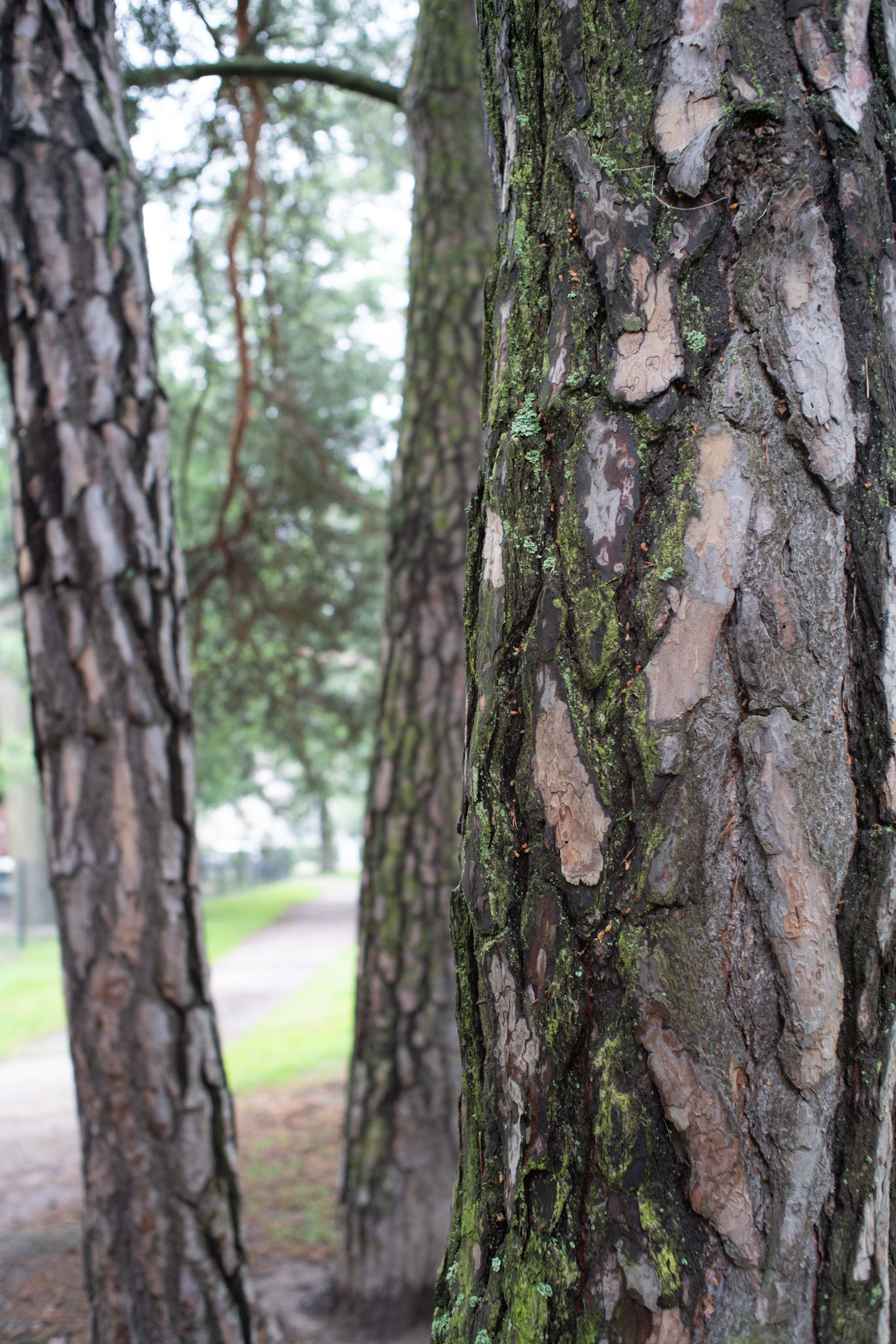
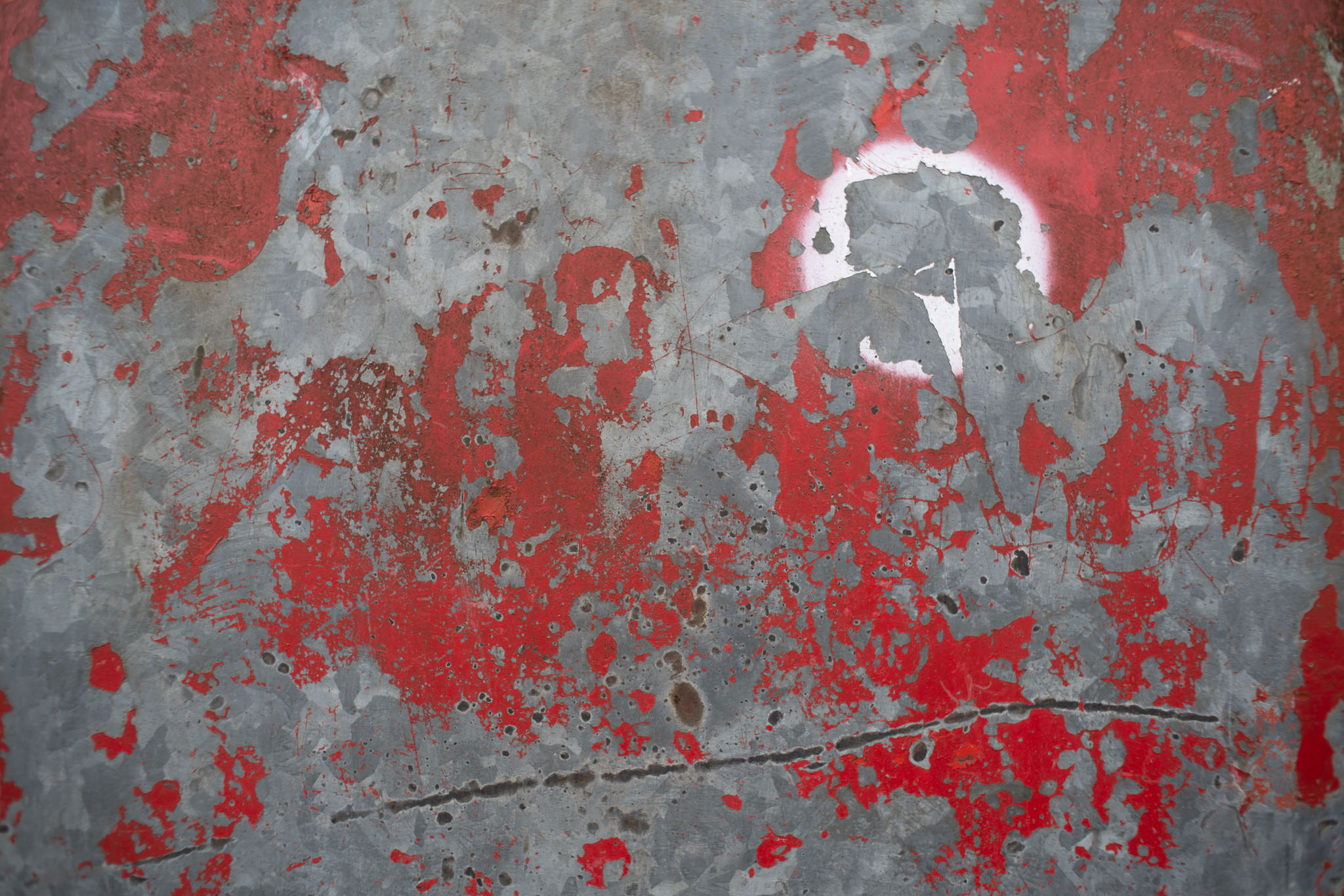

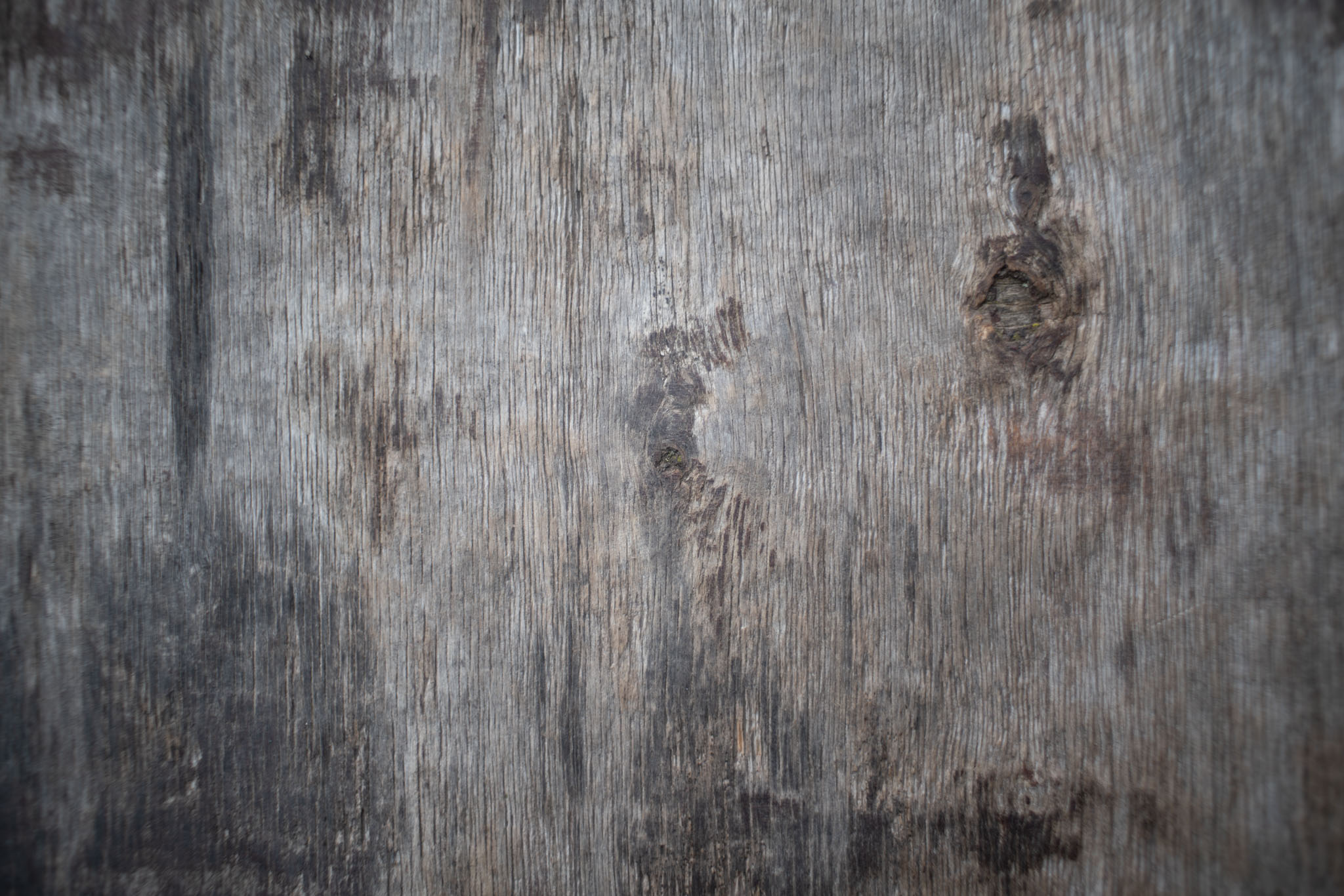
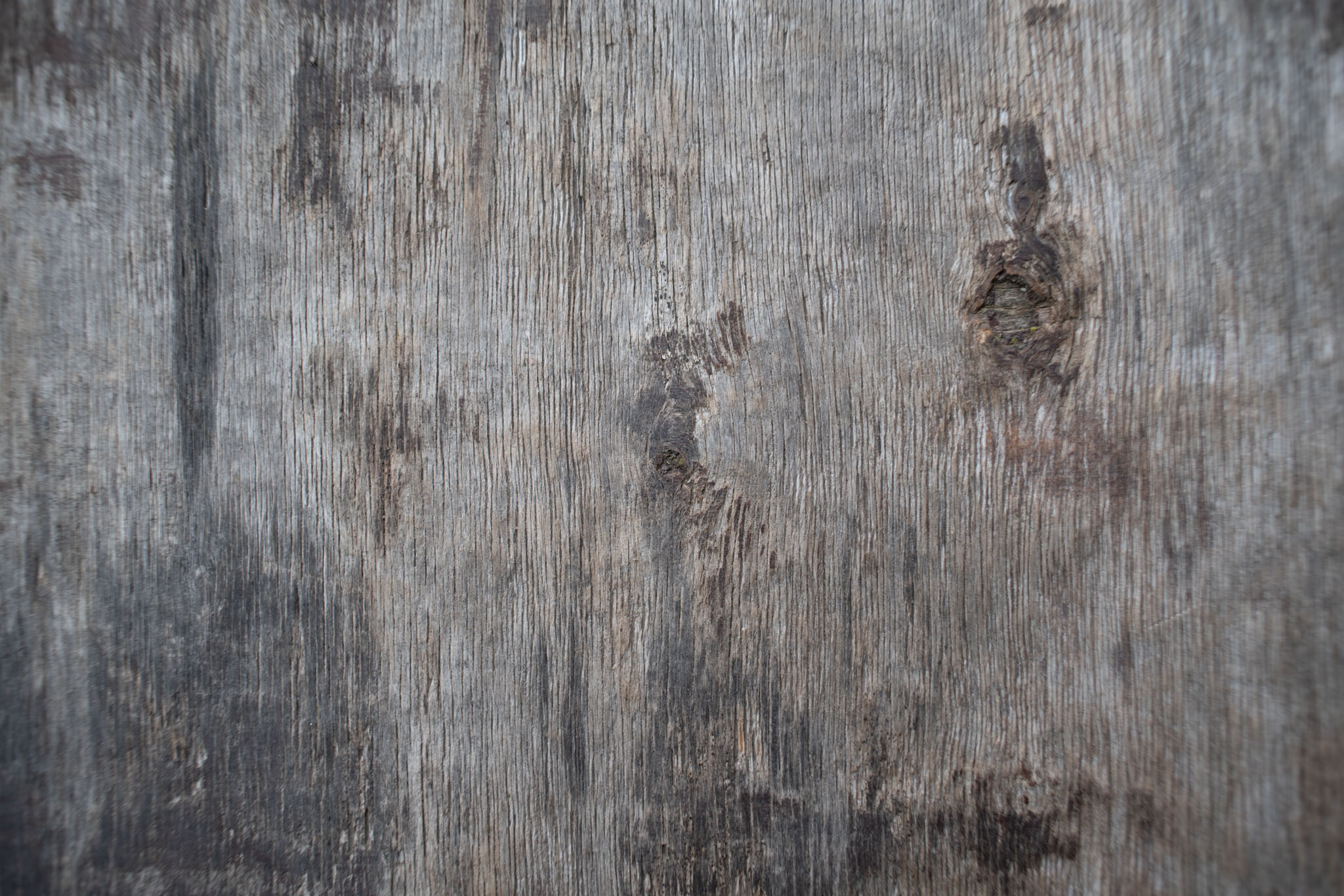
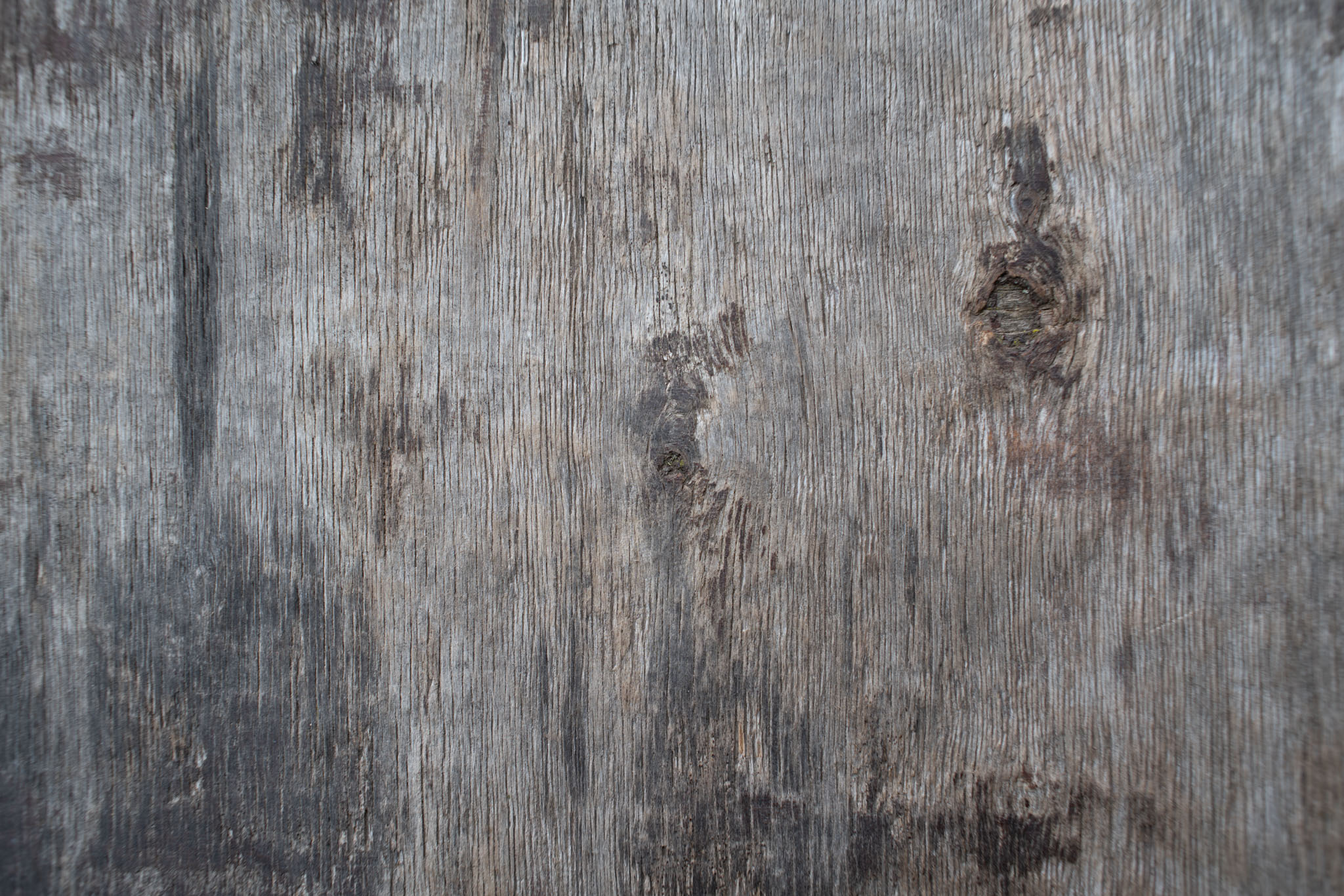
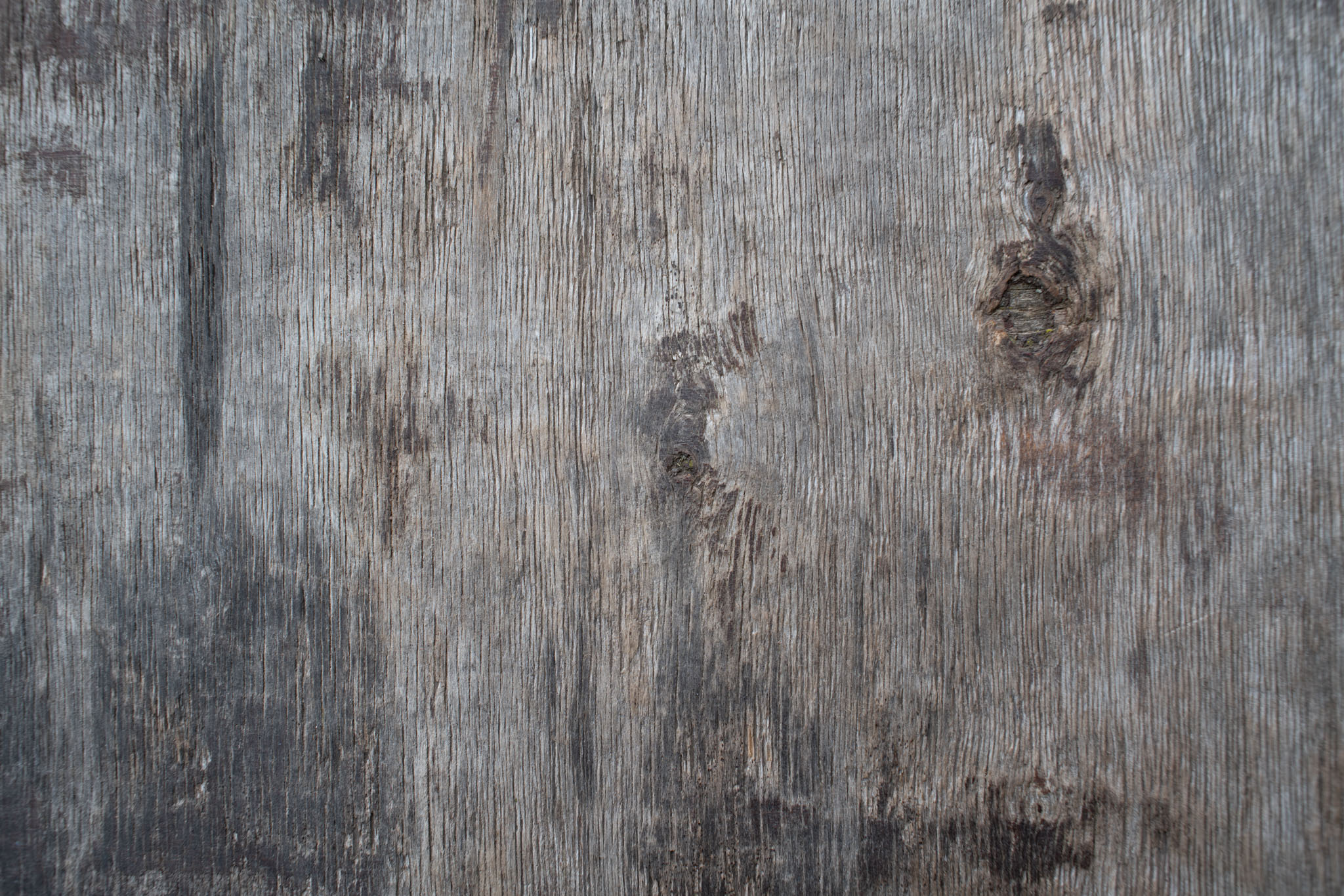
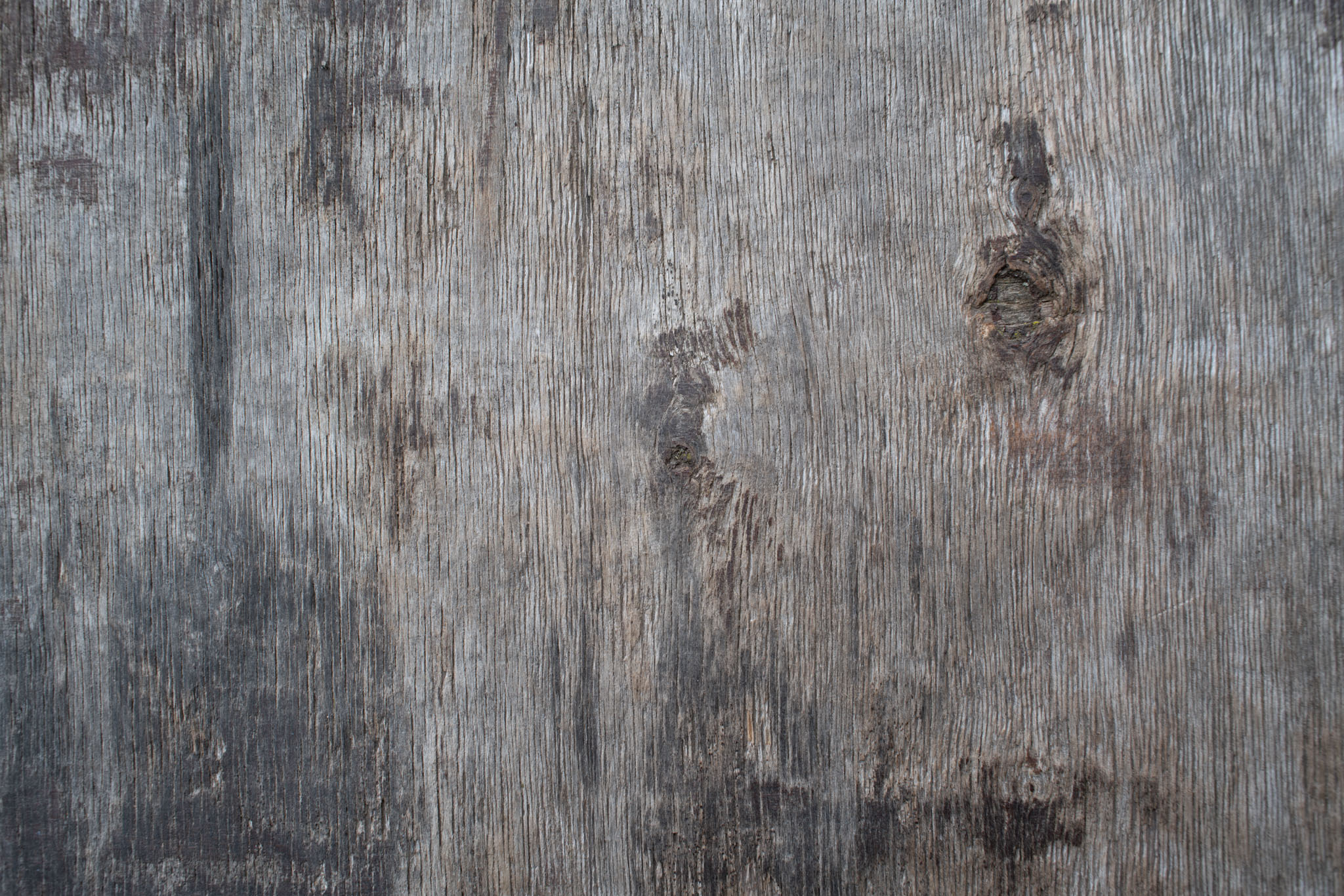
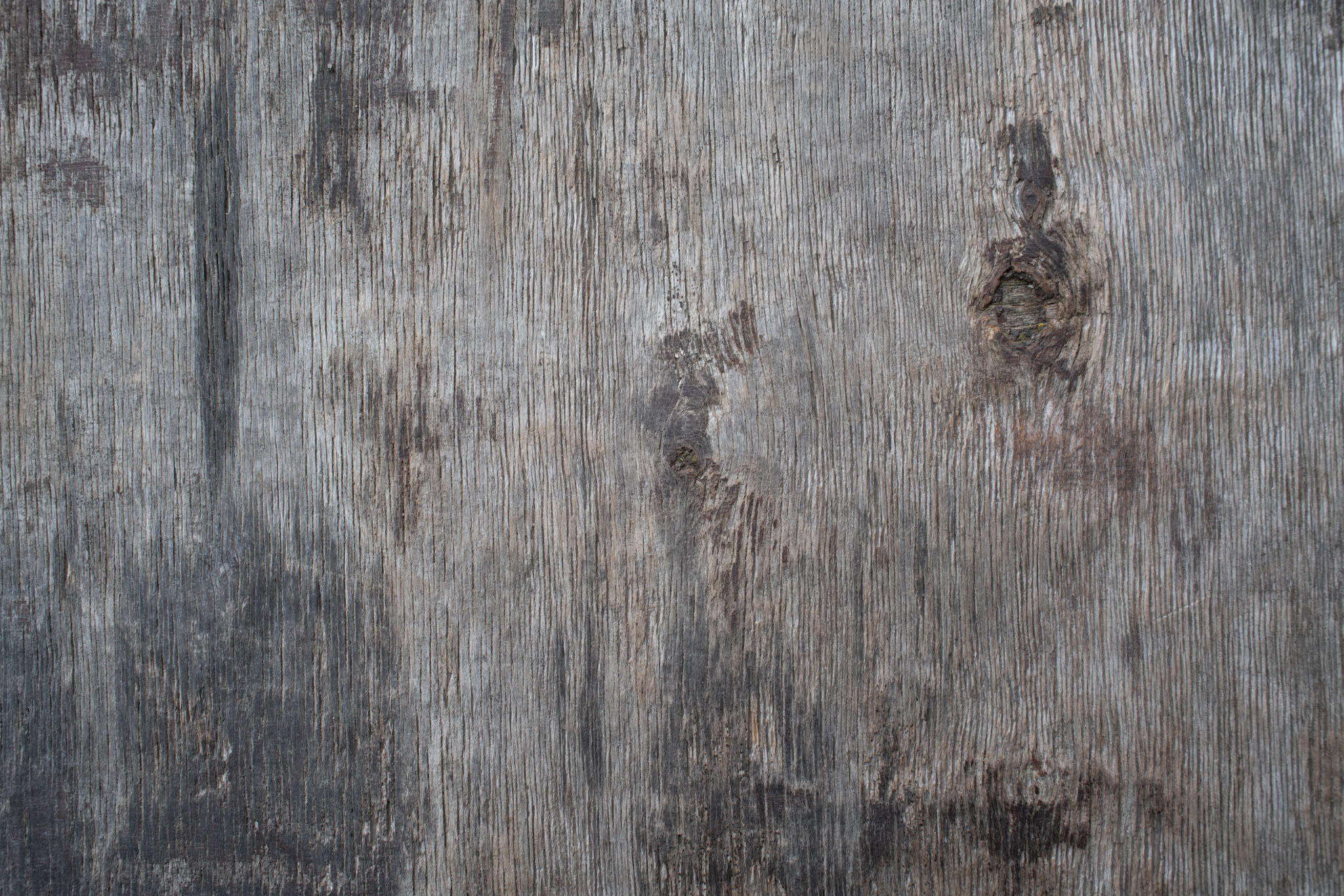

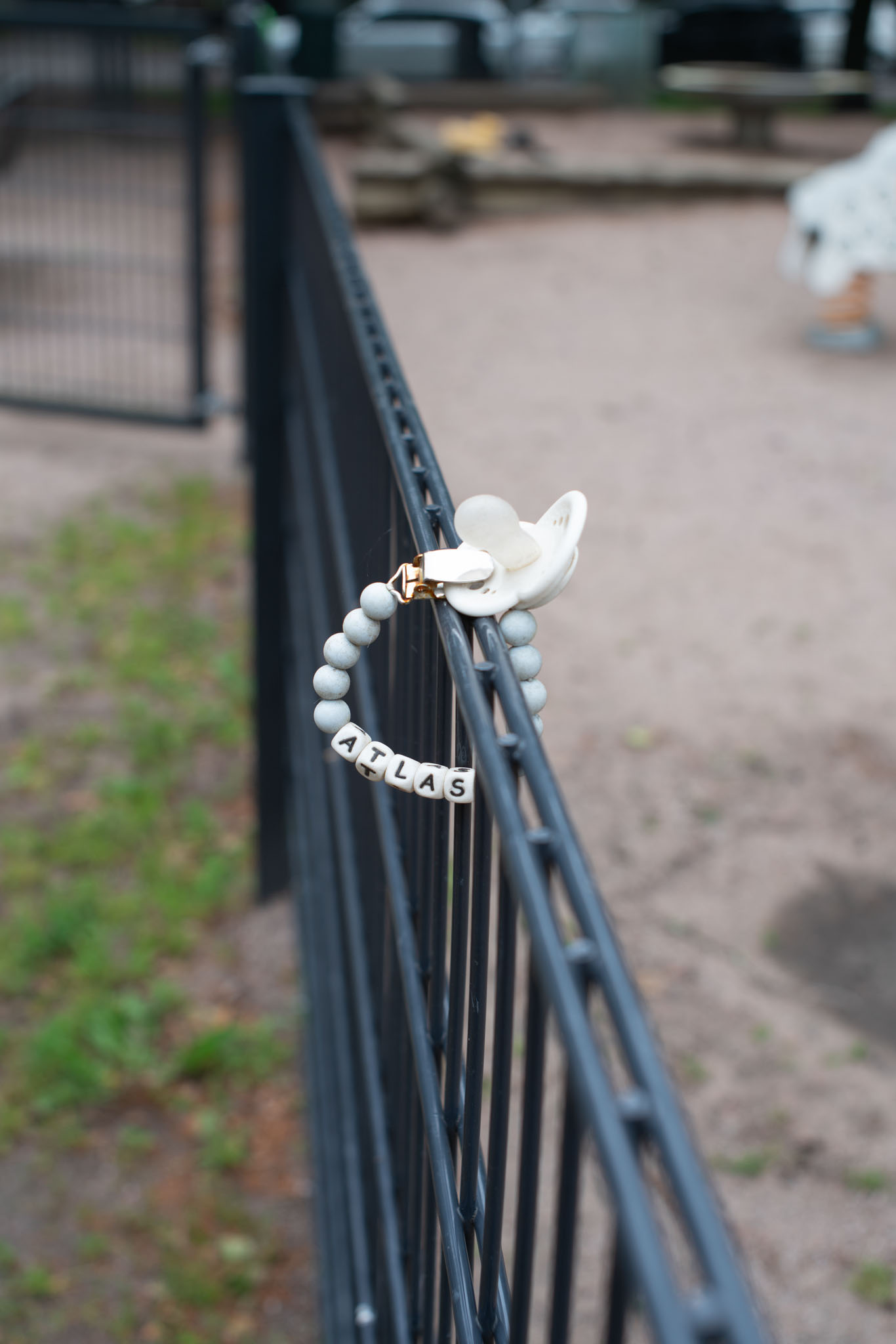
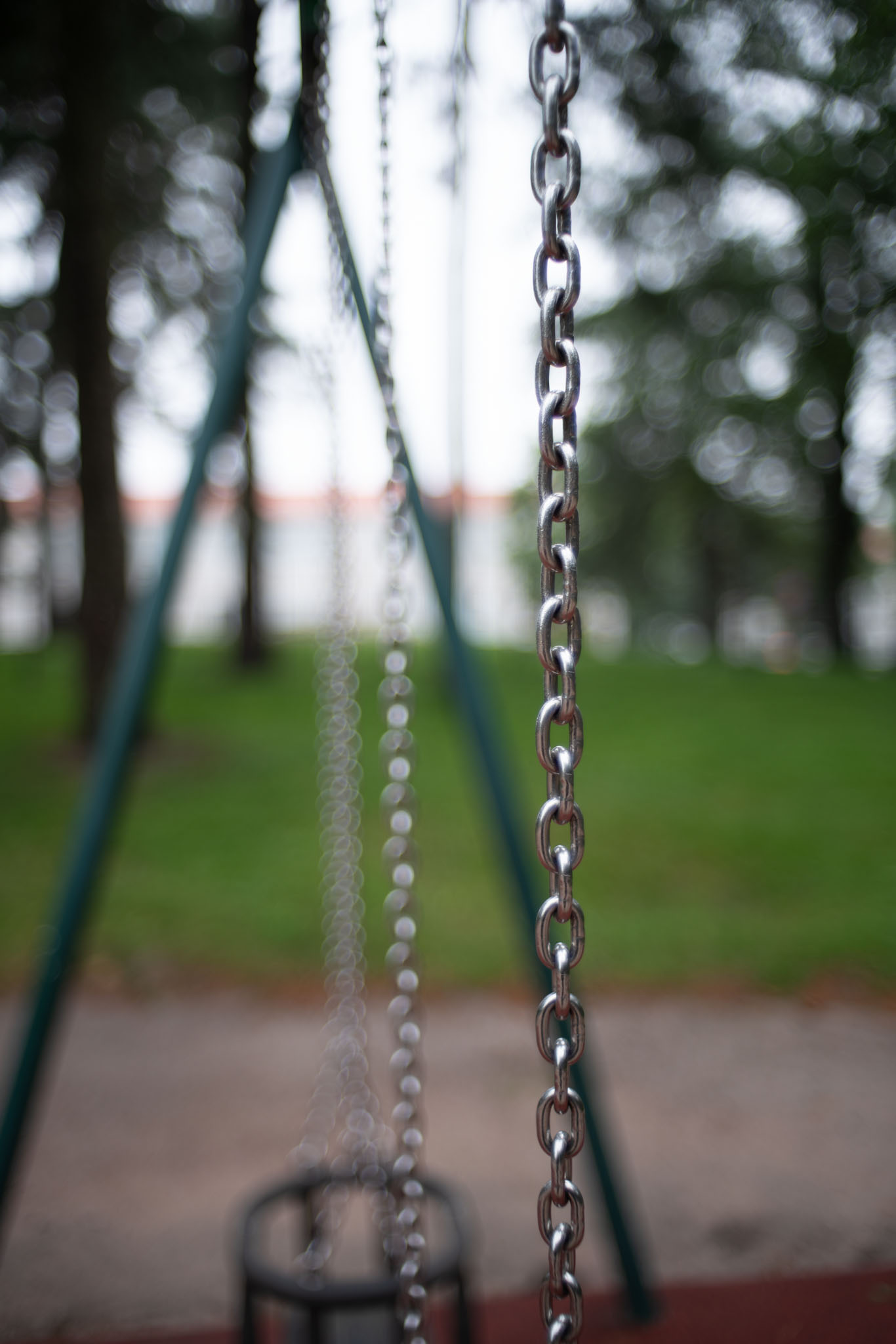
Footnotes
- Granted, some millimetres of this length is due to the Konica AR mount’s shorter than average flange focal distance, but even with a Nikon F mount this lens would be 67 mm long. ↩︎
- Even the later cosmetic variant of this lens which replaces the metallic lengthwise ribbed focus ring with a rubberised focus ring (small pyramids) retains the wide grip and dampening. ↩︎
- Fotga is not generally a brand I recommend, but out of my 3 Konica AR to Sony FE adapters the Fotga is the only one that nails infinity focus perfectly. Importantly the same cannot be said about a generally respected adapter maker’s product. ↩︎
- No changes to exposure or colours, no sharpening, no denoising, no defringing. License plates and identifying marks retouched when necessary. ↩︎
